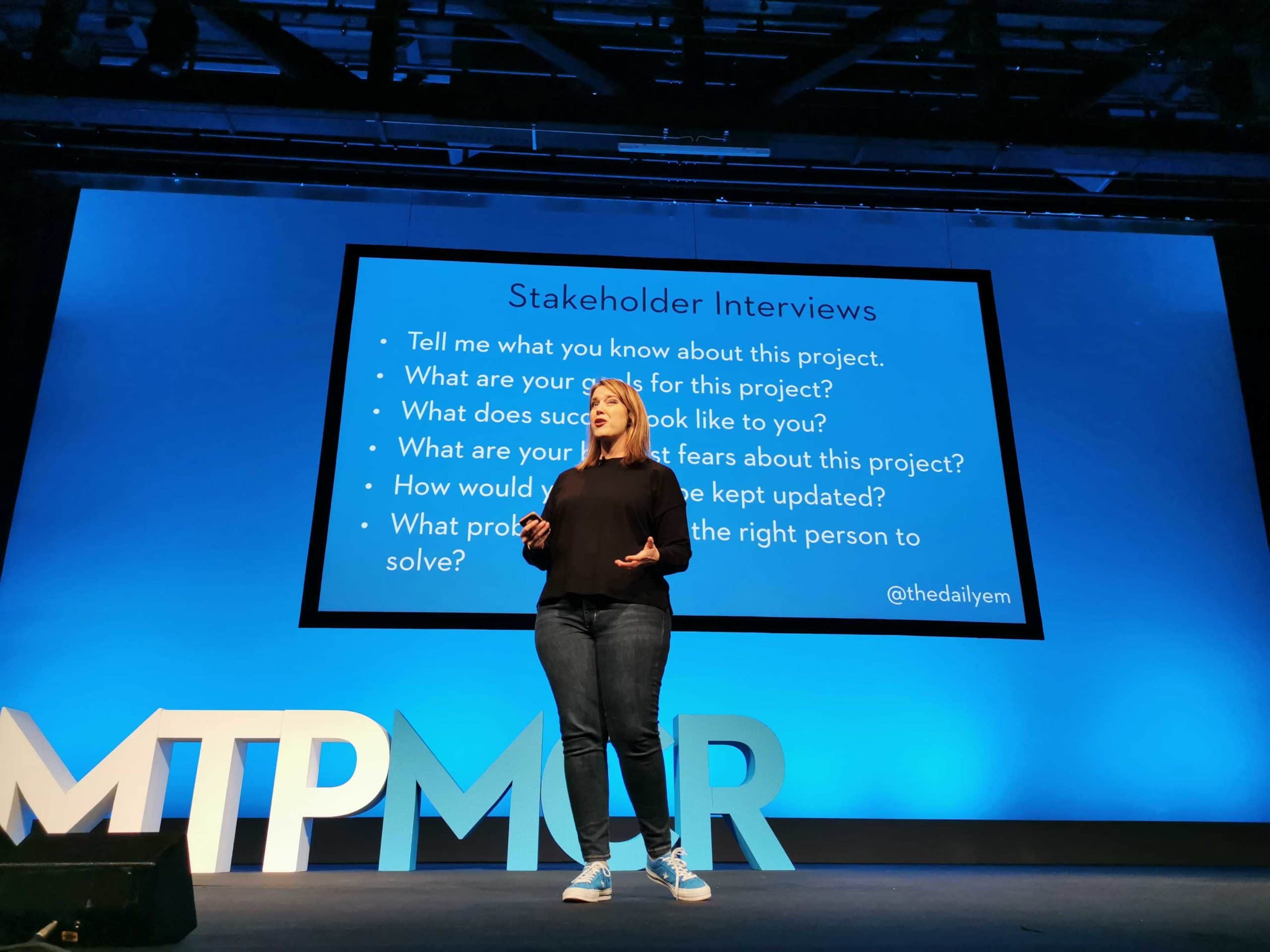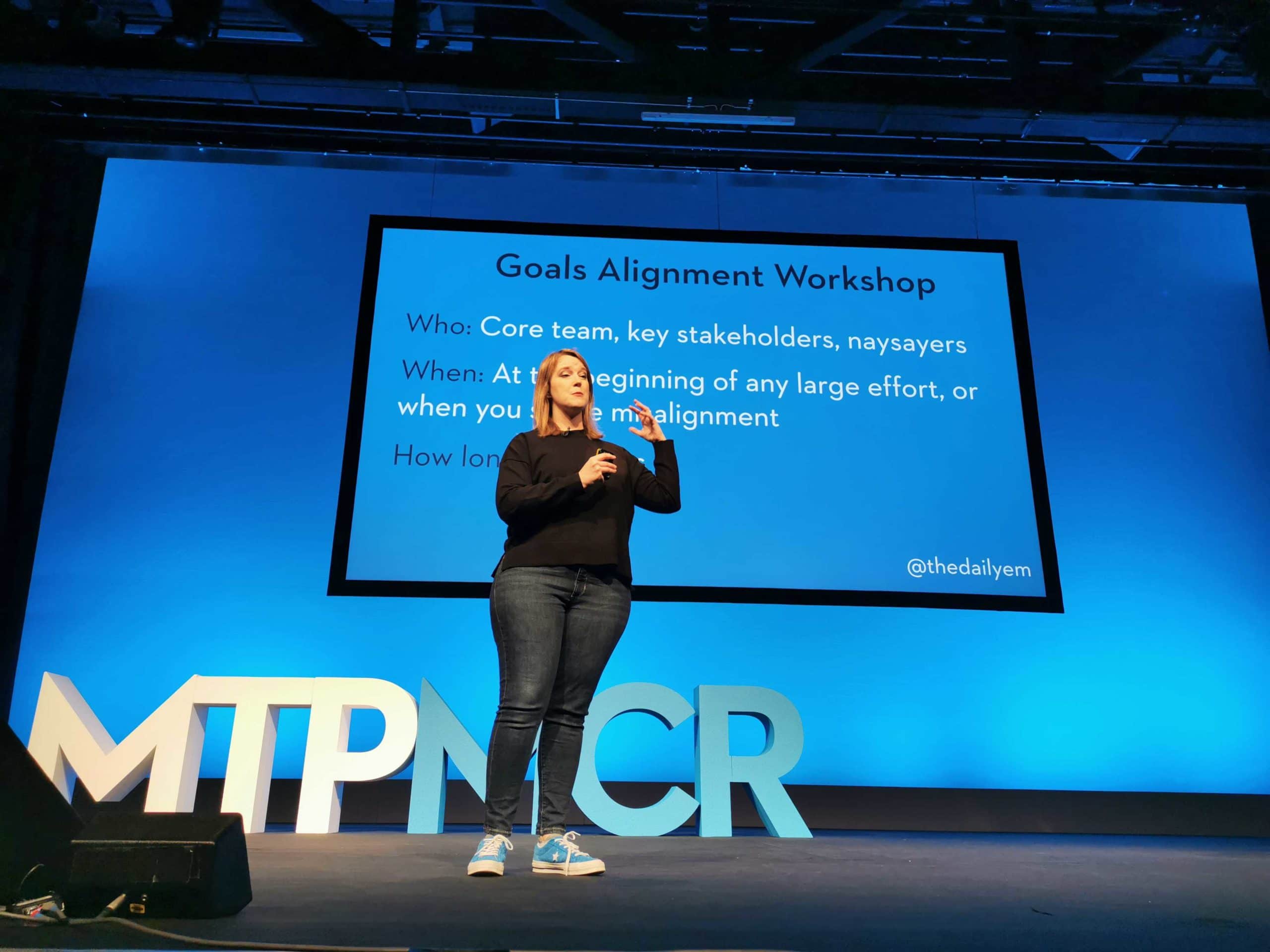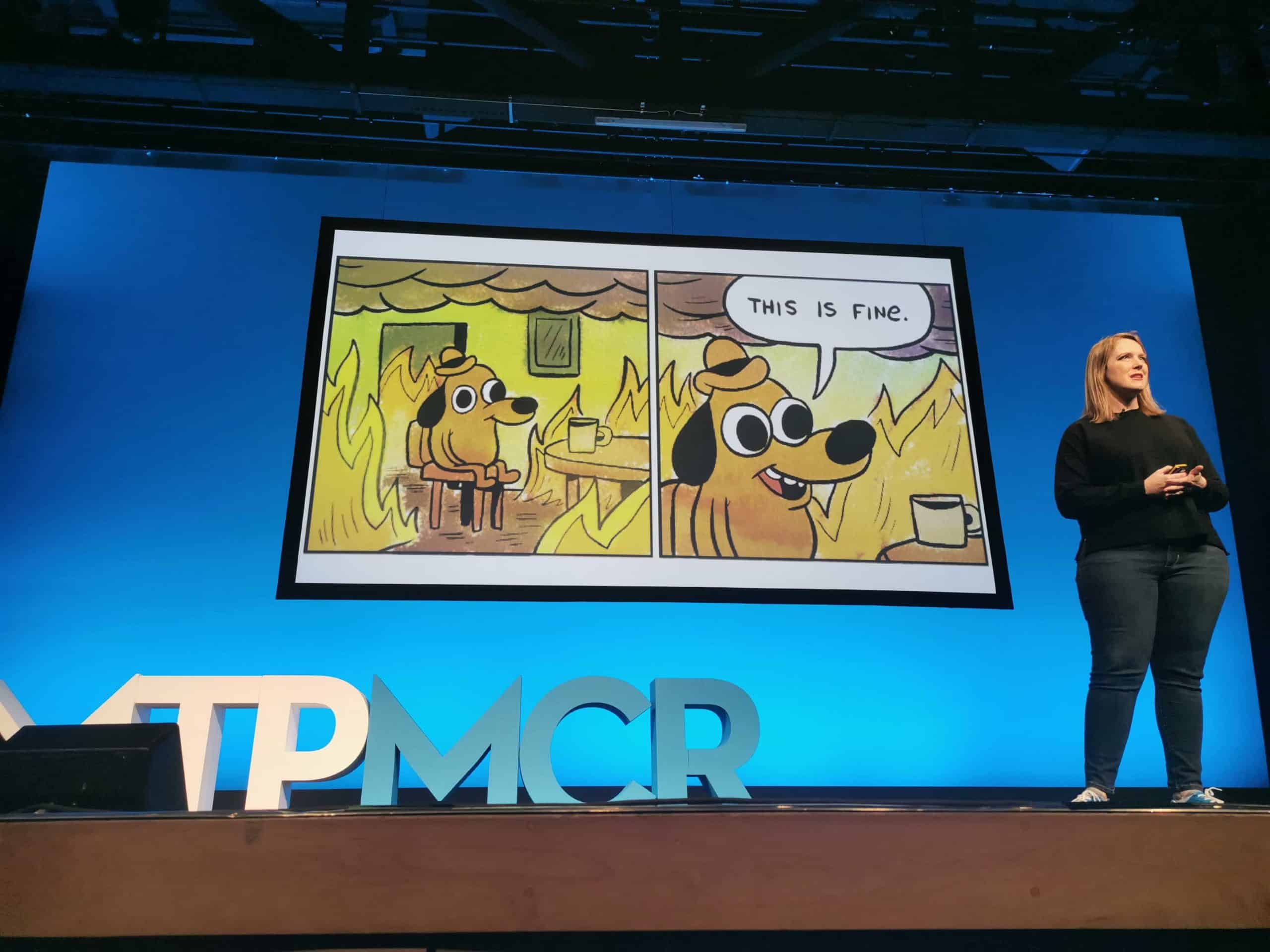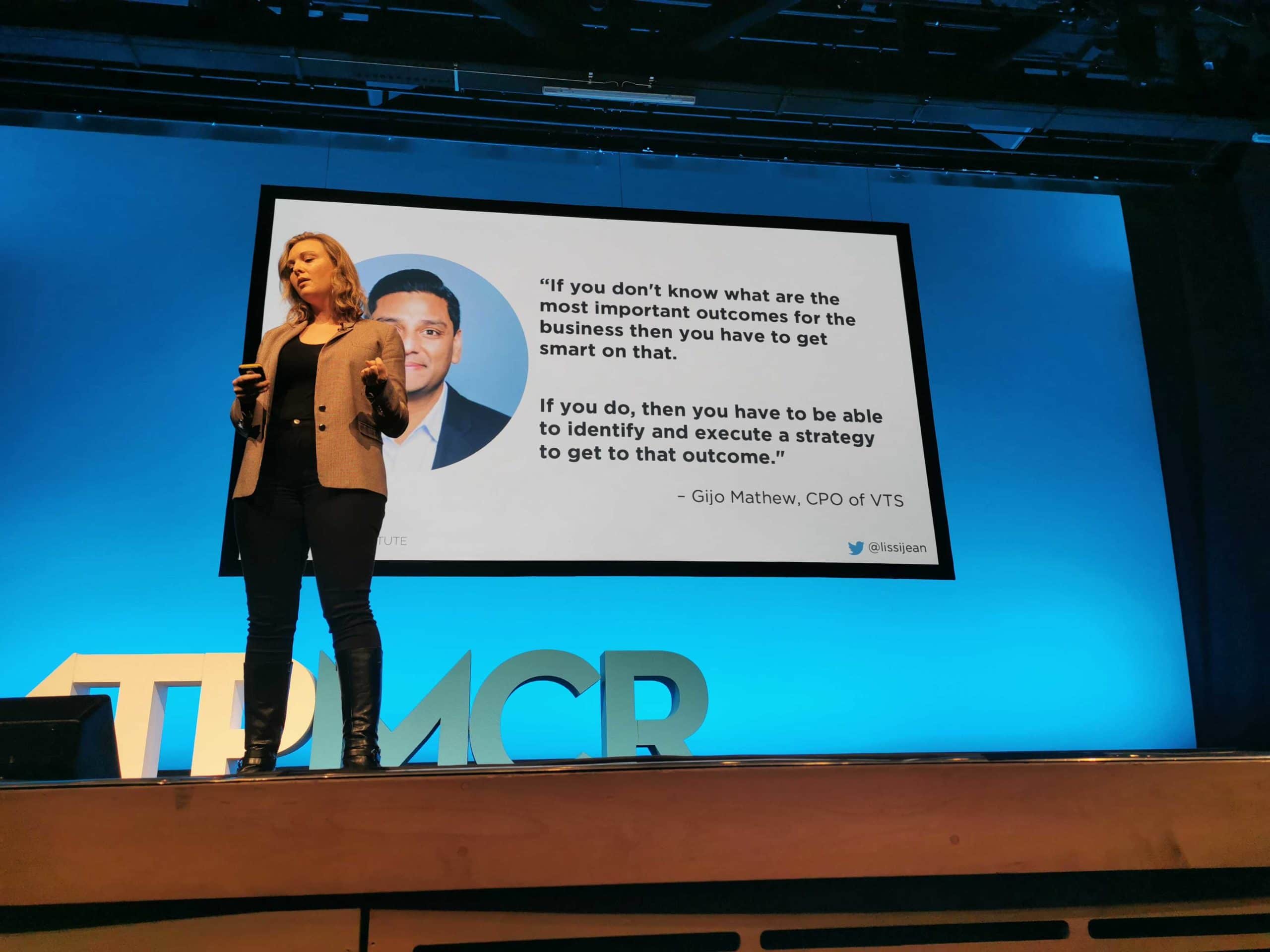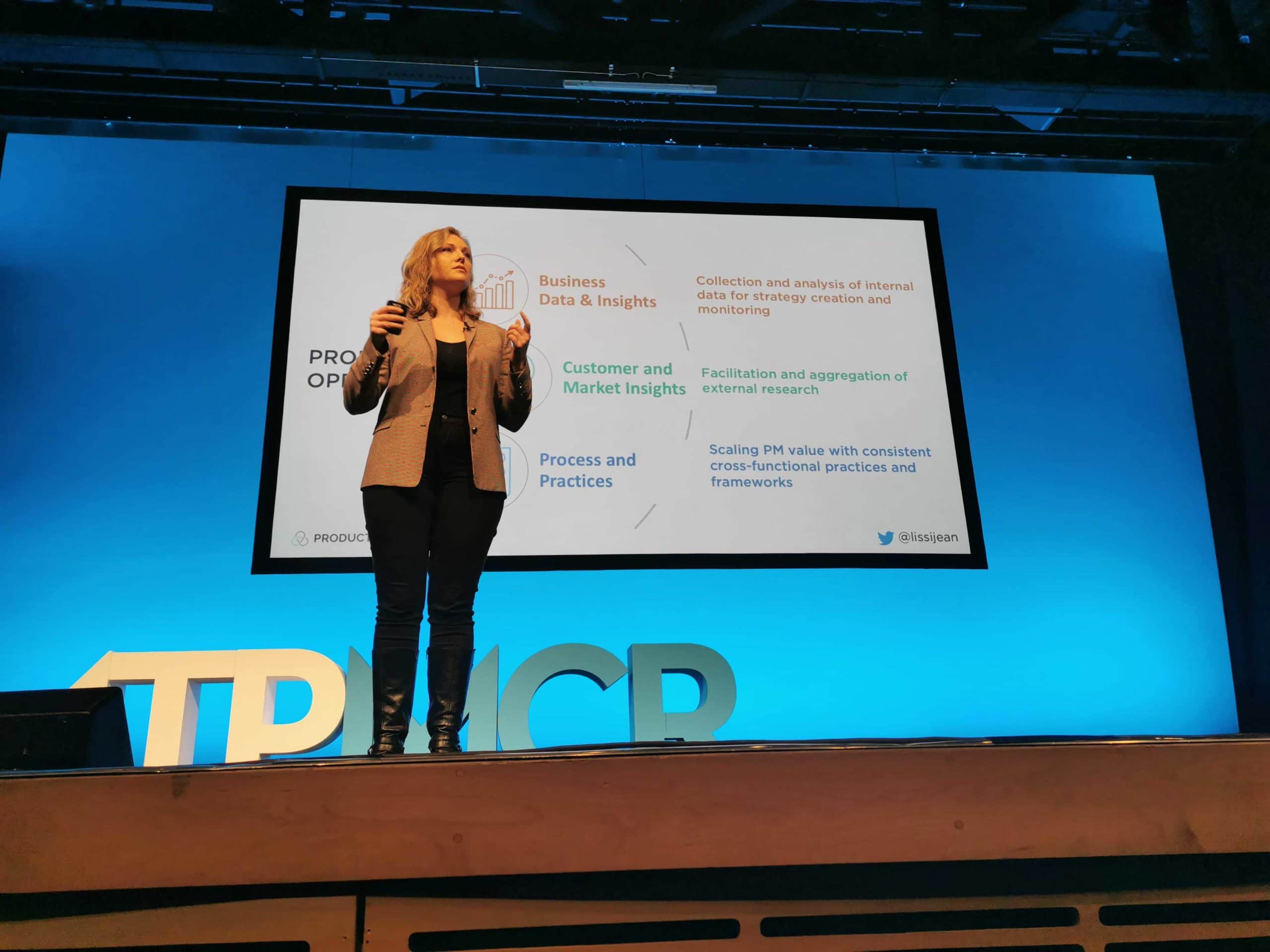Mind the Product Engage, Manchester – LIVE
I’m here in Manchester, ready for the first MTP Engage of the year. Stay tuned for updates, insights and learnings from this year’s speakers. I’ll be sharing the best bits from the talks – live, as it happens. Watch this space!
Check out ProdPad’s Twitter account throughout the day. The gang and I will be posting videos, pictures and other fun stuff from our day at Mind the Product Engage.
Oh, and one more thing. If you’re here swing by the ProdPad stand and say hello. You’ll be able to pick up some stickers, chat to our experts, and get your hands on one of our favourite product management books.
Opening Remarks
We’re here and super excited to get going!
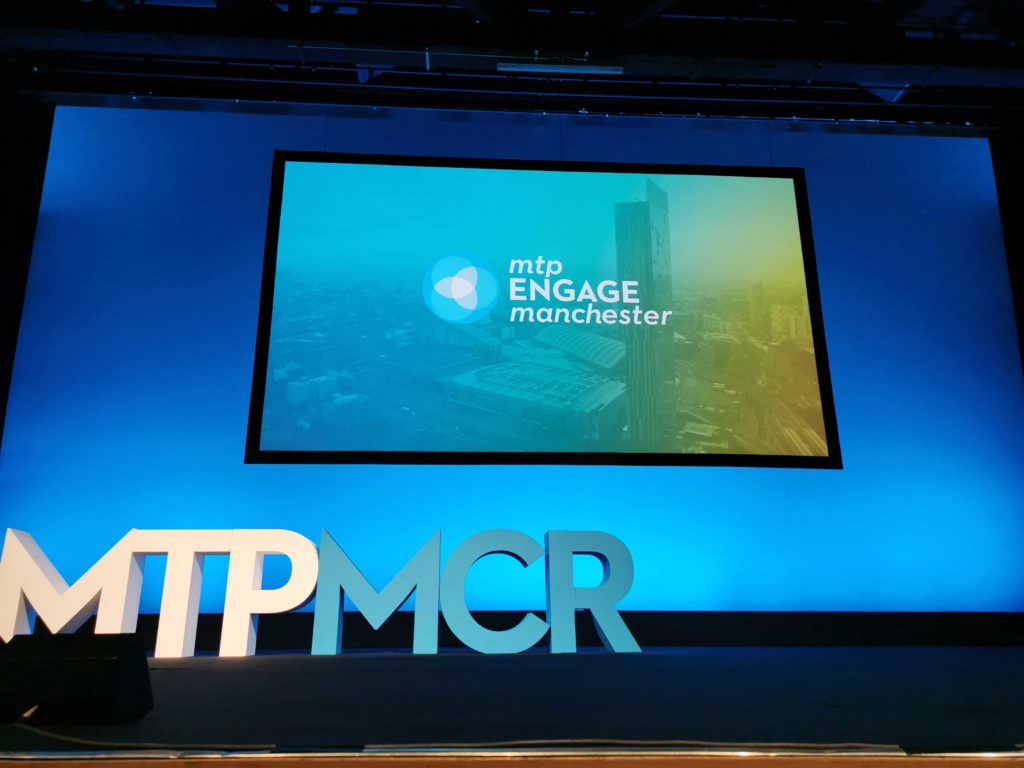
As always an amazing kick-off for MTPEngage Manchester! Manchester locals Oasis blasting on the speakers and the hype is on.
We’re back in Manchester for the second MTPEngage in town.
Where does a good product manager start? With user research. The organizers took all of the feedback from last year to ensure everyone has an amazing time. And this year, no bananas cut off at the top, more coffee available, and we’ve even got sunshine going for us.
More awesome speakers in the line up this year including ProdPad CEO and co-founder Janna Bastow, Amplitude’s John Cutler, author of Escaping the Buildtrap Melissa Perri, and UX consultant Joe Leech.
Whether you’re here to connect, share, or learn – MTPEngage has it all.
Let’s get this rolling!
Janna Bastow
ProdPad CEO and Co-founder Janna Bastow is opening keynote today.
Janna kicking off her talk asking all the product manager questions…
- What problem are you trying to solve?
- Have you turned it on and off again? (cheeky)
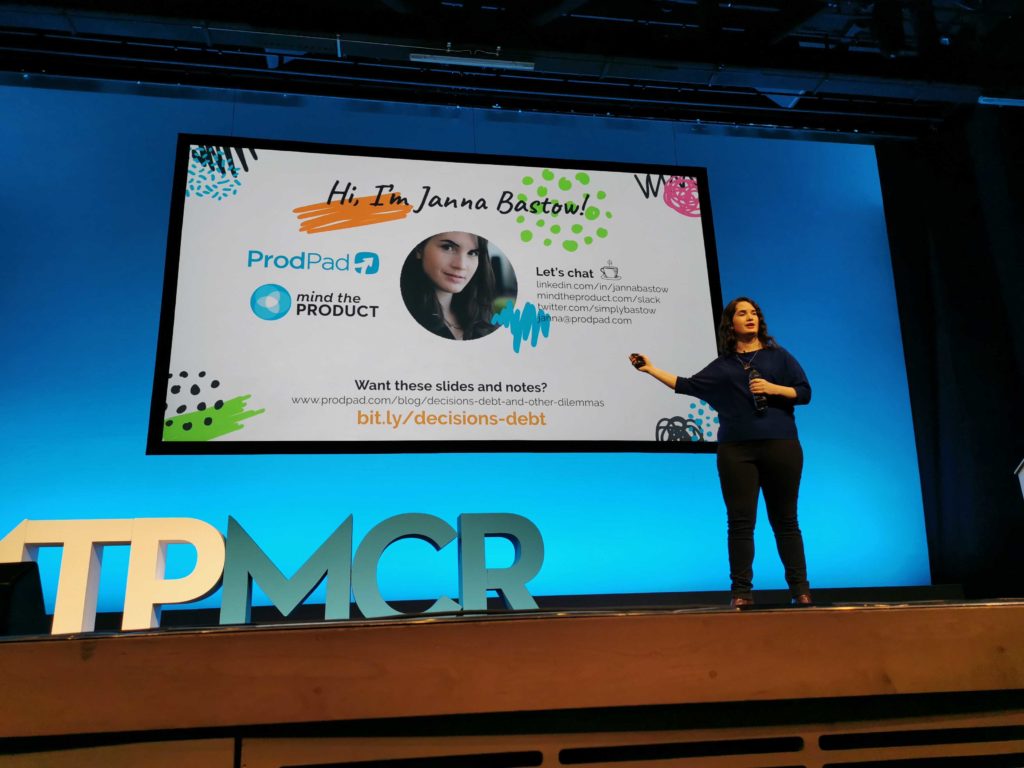
Today we’re talking about debt. Debt is certainly an uncomfortable topic to talk about… so get cozy, because it’s today’s topic!
Building a product requires a multi-dimensional approach. Imagine trying to build the perfect product without any debt… the reality is, that’s not how it works.
Debt enables trade-offs.
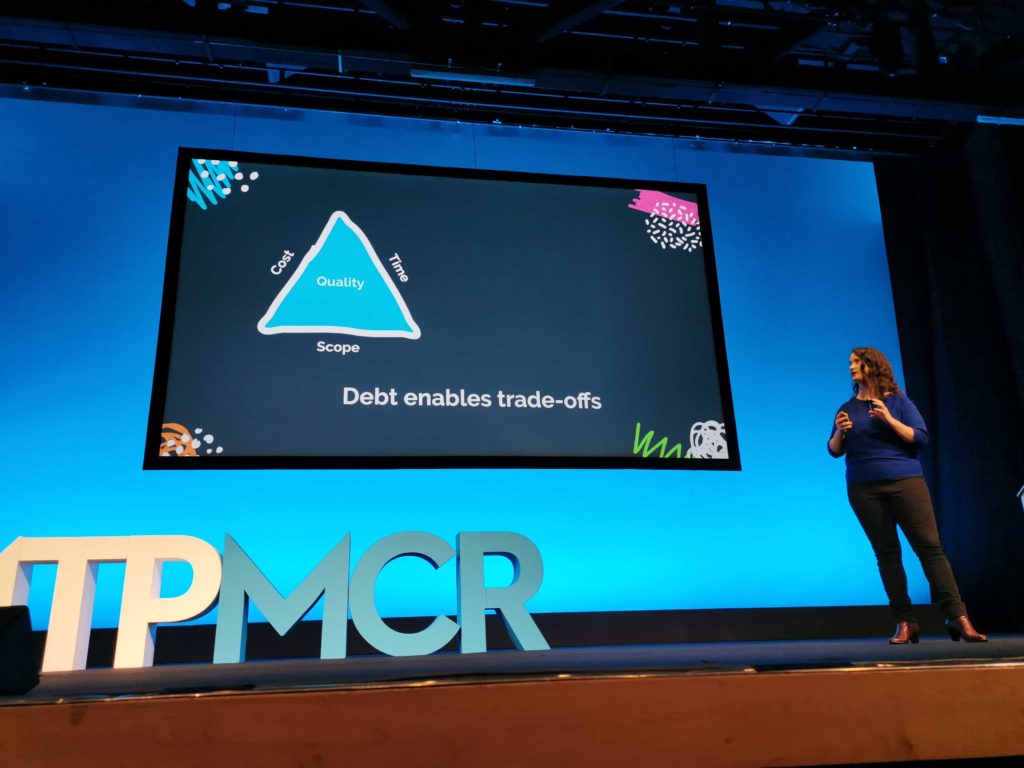
It’s either time or cost that gets traded off. That’s what we do when we run MVPs, we give up something to gain quick feedback to build better products. If you always optimize for speed, you’re never going to have a stable product. No one likes tech debt, but it’s a reality of life… and product.
Some tech debt is intentional, some is unintentional. You might take on tech debt to run discovery, and that’s ok, as long as your entire team knows what’s coming. Important bit right here – are you keeping your team informed?
And now on to my favorite bit… deadlines suck, and they’re to blame for bad tech debt.
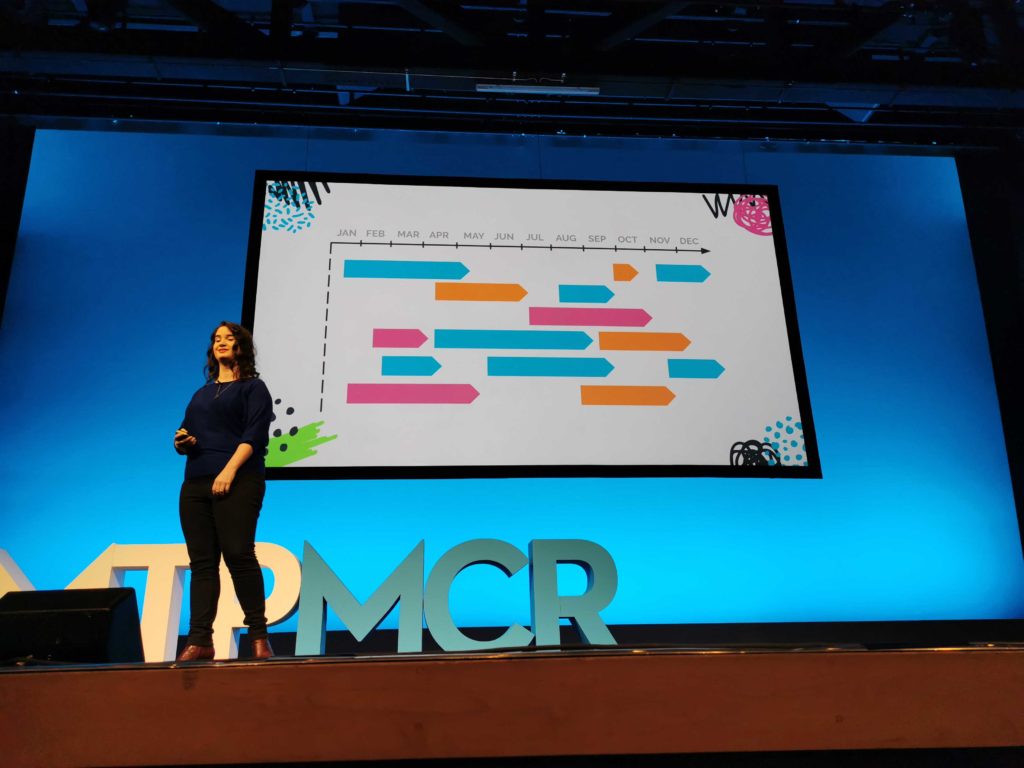
Timelines sit at the top marching forward, meaning everything in your backlog has a deadline. This is where problems start happening. Scope creeps, deadline crunches, anxiety… and then you have to make a trade-off. But the trade-off is really happening with the quality of your products.
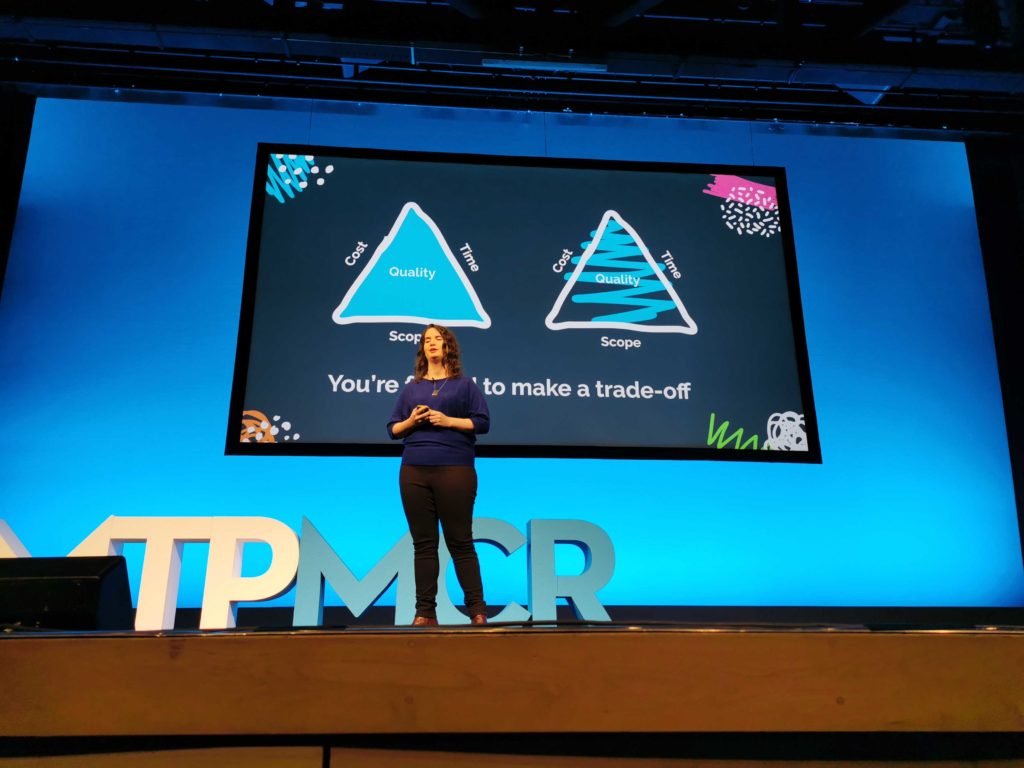
While your team gets anxious, developers quit, information is lost… and then you’re left having to refactor. And you have acquired tech debt.
But don’t worry – there’s a solution!
The answer: team communication. Include your team in discussions around objectives, outcomes, and give them time and space to build stuff they’re proud of.
Yes, this means giving people extra time to have to write code, but guess what? It works! Code is a lot more stable and of higher quality without the stress of having to meet a deadline.
It’s all about building trust.
Turns out though, it’s not just tech debt you have to worry about. Design debt is also a problem.
“It’s not a bug, it’s a feature” is a popular line we’re all familiar with. It’s important to not let design debt build up, causing bigger issues later on. Our Product Designer, Kavan Webb, actually measures usability throughout the application to ensure we don’t stack up on that design debt at ProdPad.
Using a Design System can be helpful in tackling design debt as well. Fewer trade-offs involved with this, providing you with a base line for product features and their quality.
If tech debt and design debt aren’t kept in check, they spill over to process debt.
That is, having to rely on the rest of your team to manage the issues for you. This includes your support team writing more detailed support documentation, writing automations to make up for things your design lacks.
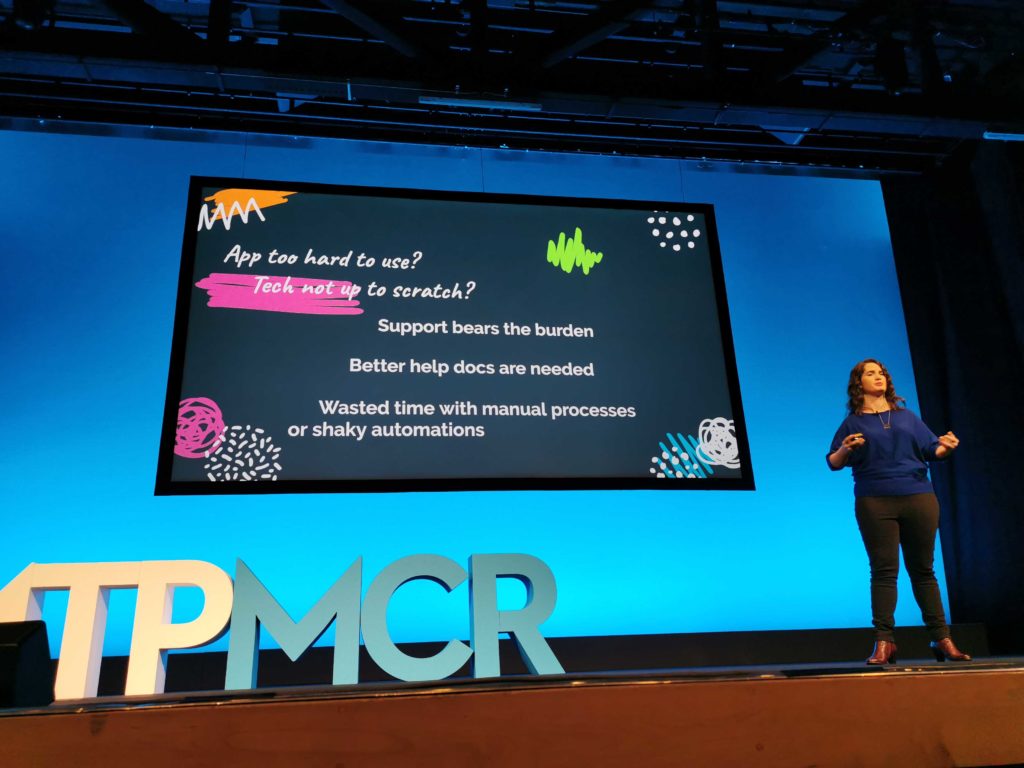
If you’re not quite sure if this is something you’re suffering from, you can use support tools like Zendesk to track what type of tickets you’re receiving and seeing which ones are taking up the most time. That is a great indication of what your support team is having to deal with, giving you an insight on where you can make improvements.
Culture debt, says Janna, is a round up of all of these issues. CEO’s are forced to show growth, management wants to show predictable numbers for investors, which leads us to vanity metrics and team silos. Your teams should not be competing against each other, but rather with each other.
Product management is a cost center. We’re still trapped into an old pattern of writing detailed specs, breaking that into story points, and trying to figure out how fast we can work. This is all output focused… when it should be outcome focused.
This leads to team burn out – as well as tech, design, and culture debt.
Teams end up building the wrong thing. They’re trapped in a feature factory they can’t get out of.
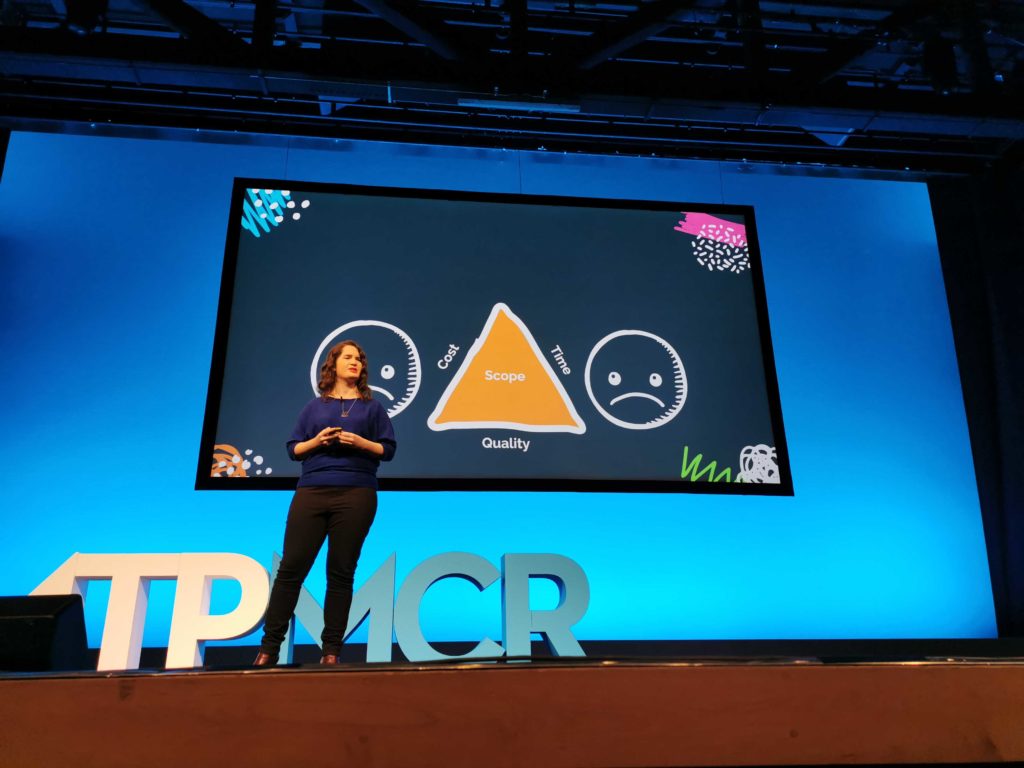
How do we fix this? Of course, communication! And that’s what we do as product managers. We help everyone communicate and find the best way forward by focusing on the outcome, not the output of what we’re trying to achieve.
It’s all about strategic objectives, holistic measures and safe communication.
Debt isn’t just about the obvious things that you see it’s also about all the accumulated debt that’s hidden behind the scenes and sitting in your customer team.
Janna Bastow
Of course, there’s more to being a product manager. We also suffer from what Janna calls admin debt – including transcribing notes, looking at emails, and making sure your other tasks are all kept up to date.
At ProdPad we call this tidy time. 2 hours every week where we take care of all those little things that keep us busy, to make sure we can come back the following week with a fresh mind. Definitely worth trying!
Becoming outcome-lead and letting go of timelines is hard. Worry not! Janna is ready to answer your questions at the Q&A session later today, and of course, via Twitter.
Joe Leech
Joe Leech is up next. I had the pleasure of taking a course with him a few years ago, and always an amazing speaker to watch!
Today Joe will be talking about making better product decisions with jobs to be done.
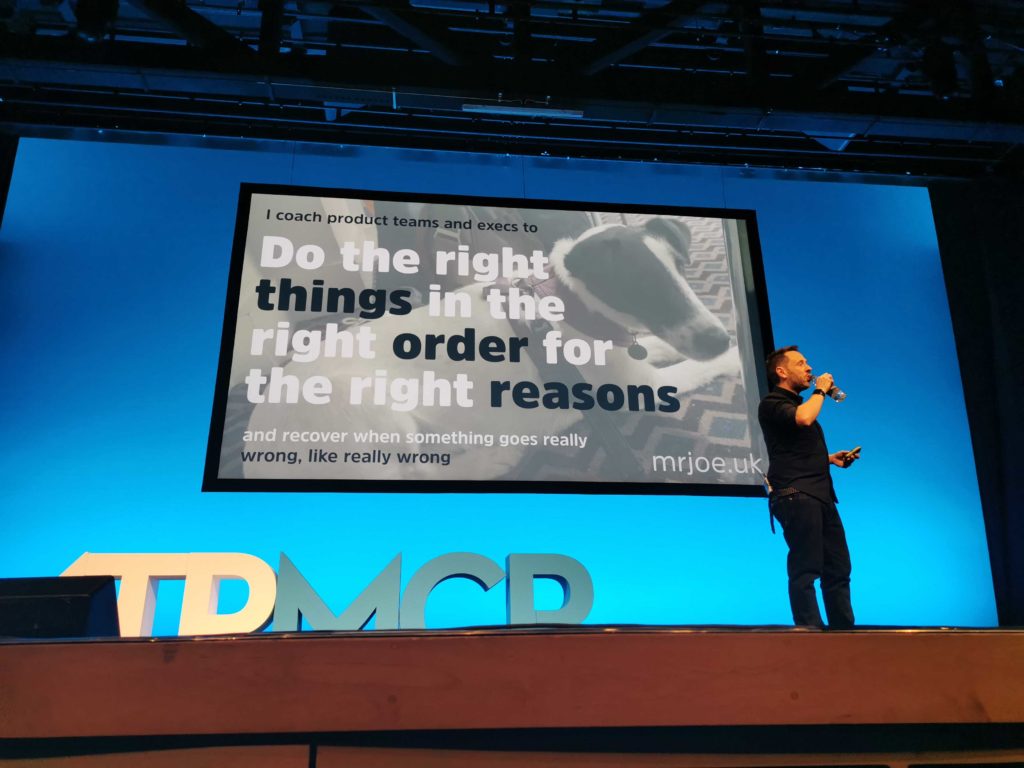
Joe telling us about working with MoMa in New York. He started helping out the museum by trying to figure out who their biggest competitor was… turns out, it was Netflix. People would rather stay in than go to a museum.
“You may think your competitors are the obvious business next door or down the road, but when you actually ask your customers they tell you the real story.”
Joe Leech
When approaching the problem, Joe applied JTBD.
A good point on working with your marketing team made too. Your product can be amazing, but if you’re not friends with your marketing team and no one is there to talk about what you do – does your product even really exist?
It’s important to look at the entire customer journey from beginning to end. Measure the end goal, not a single step in the process!
Here’s a great example Joe is showing us: Have you ever tried buying a drill? Drills are always marketed with details that are so descriptive that are directed towards a very specific thing: drilling a hole. But the hole is not the goal! (everyone is saying that together now)
The end goal is really to hang the picture. This is where JTBD comes in. JTBD focuses on the actual final goal.
We’re now learning about breaking down jobs into three stages: Functional, Emotional and Social.
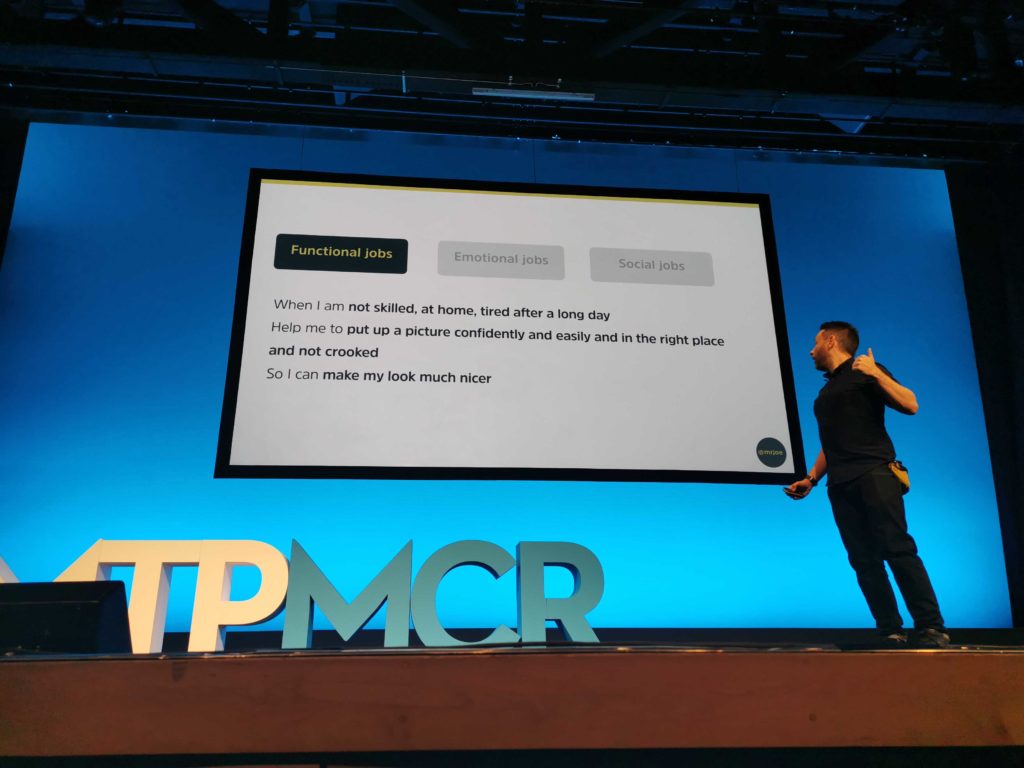
- Functional – Ensuring functionality
- Emotional – Ensuring the user feels successful
- Social – Ensuring the user can “socialize” their end goal (can they brag about how good they were using your product?)
“The goal of a job story is about richness and context the goal of the user story is to create an argument between your developers.”
Joe Leech
Most importantly… don’t focus on what your competitors are doing.
Focus on what your users want and what they’re attempting to do. Stop trying to copy the competition, and stop worrying about them copying you. Build things that cater to your customer’s purpose, it can only result in you building things that actually matter.
Joe now giving us a quick breakdown of the forces that involve a product purchasing decision, and how you can measure where you stand against your competition.
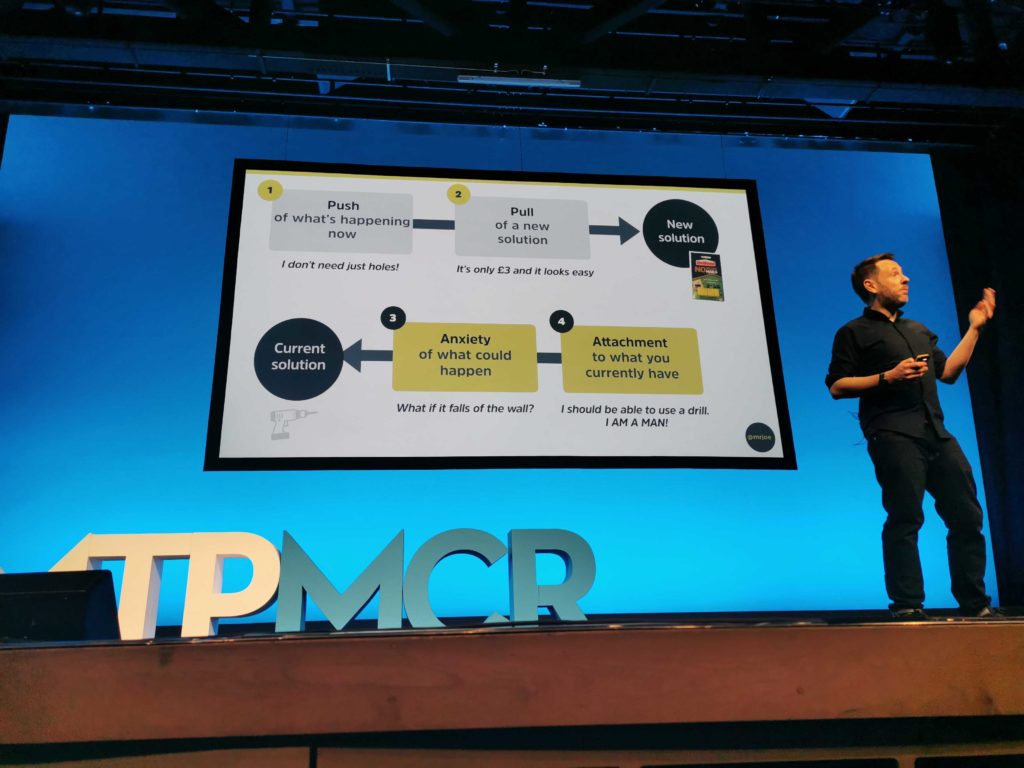
Joe now giving us an example of emotional and social jobs when it comes to the purchase of refrigerators. Sure, there’s a functional aspect (we all need to keep our food somewhere!) but as a center piece of a kitchen, the fridge is really about emotional and social aspects. (Is it pretty enough to show off?)
Looking at reviews for refrigerator purchases, it’s all about how great it looks in a home. Less people care about how “well” it works, but how good it looks!
“That’s the problem with e-commerce websites they rely on the reviews to sell the product. The reviews should be backing up what the description says not doing the selling!!”
Joe Leech
Jobs to be done is about helping you design, build, and market your products. It’s a wonderful way of turning your organization from being output focused to being outcome focused.
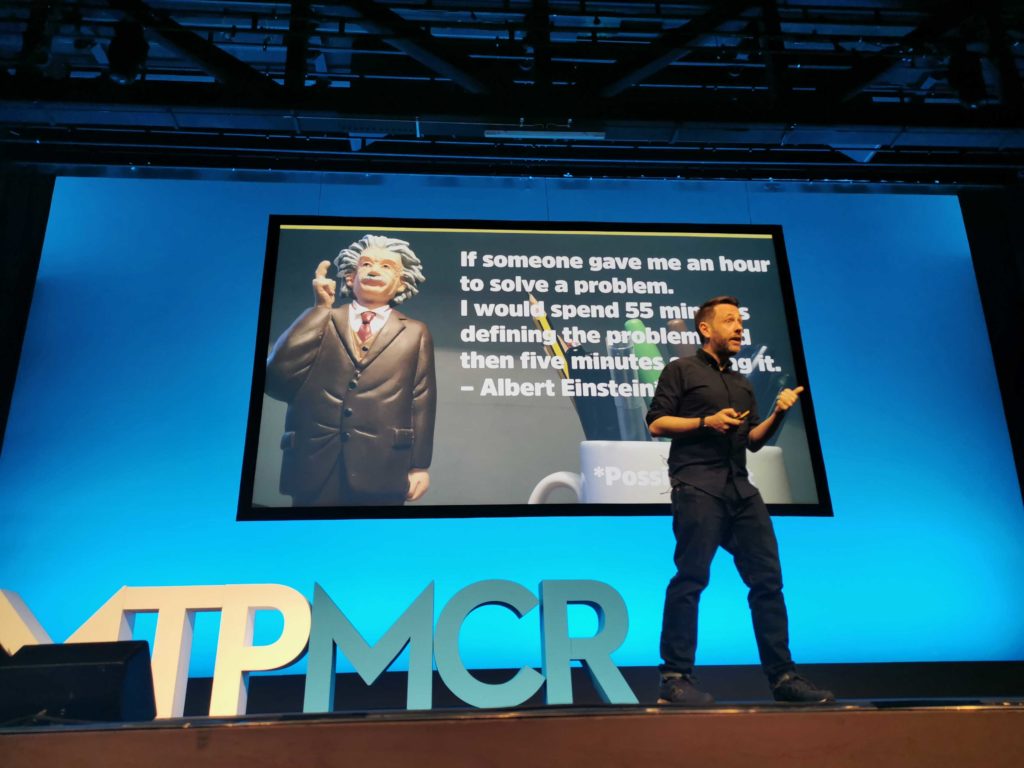
Do you want to sell jobs to be done internally? Point back to the Harvard Business Review material. Written in an MBA approach, designed to appeal to your execs!
John Cutler
John Cutler is up next.
Today’s talk is “The beautiful mess.”
John’s background is in product management, UX, startups and music. He mostly talks to customers, prospects, and broader product public. If you’re a product manager on Twitter, you’ve certainly seen his tweets!
We’re currently learning about the full range of companies he speaks to. From startups to 30k-people organizations, he’s spoken to quite the range.
But what has he learned?
Product is hard. Everywhere you go, no one has it figured it out.
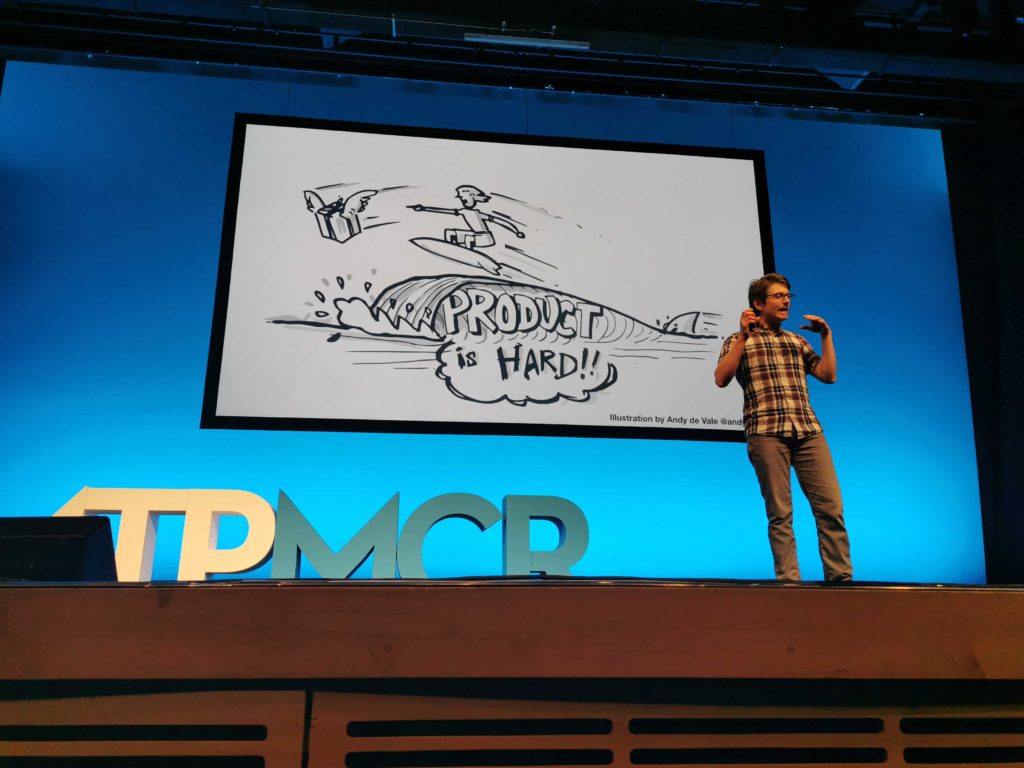
Progress in one area will create problems in another area. What got you to one point, won’t get you to another point.
Recipes on how to be awesome. All companies have blog posts around how the organization does stuff. This leads to a sort of envy about how others do things more effectively than you do. This creates tensions between the dream world, the skepticism, and the stubborn people in your company.
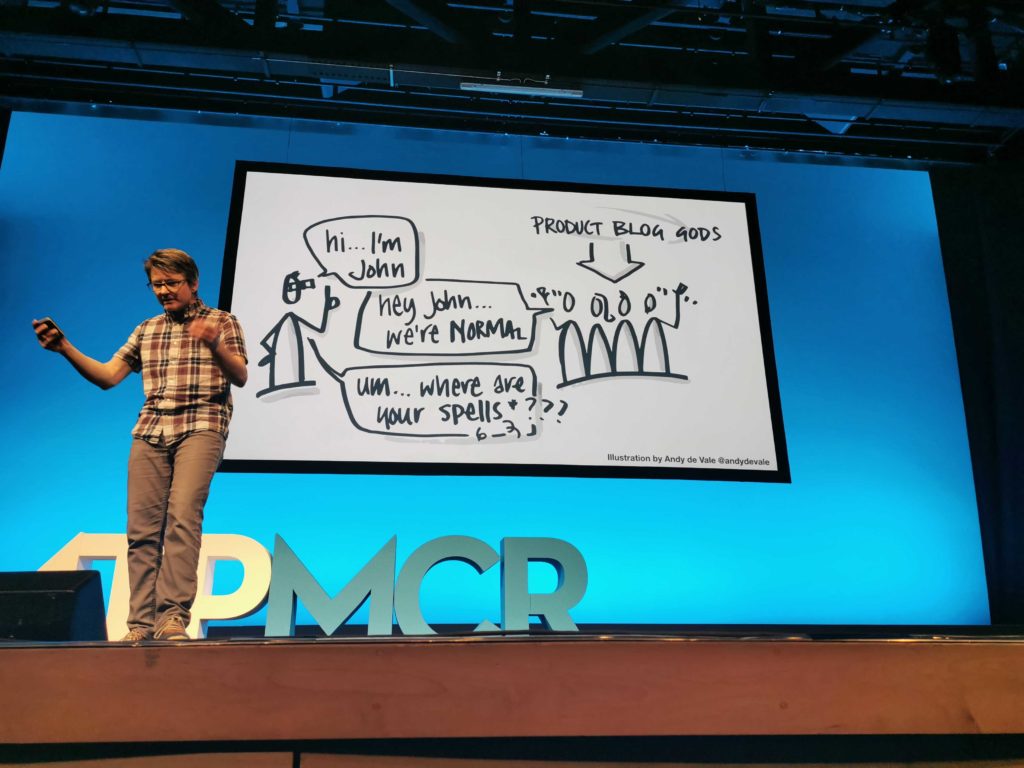
The important point here is that product is hard regardless. Their process will work for them, but it might not work for you and that is ok!
To reach Product Nirvana, the first step is to have self awareness – that is where change begins.
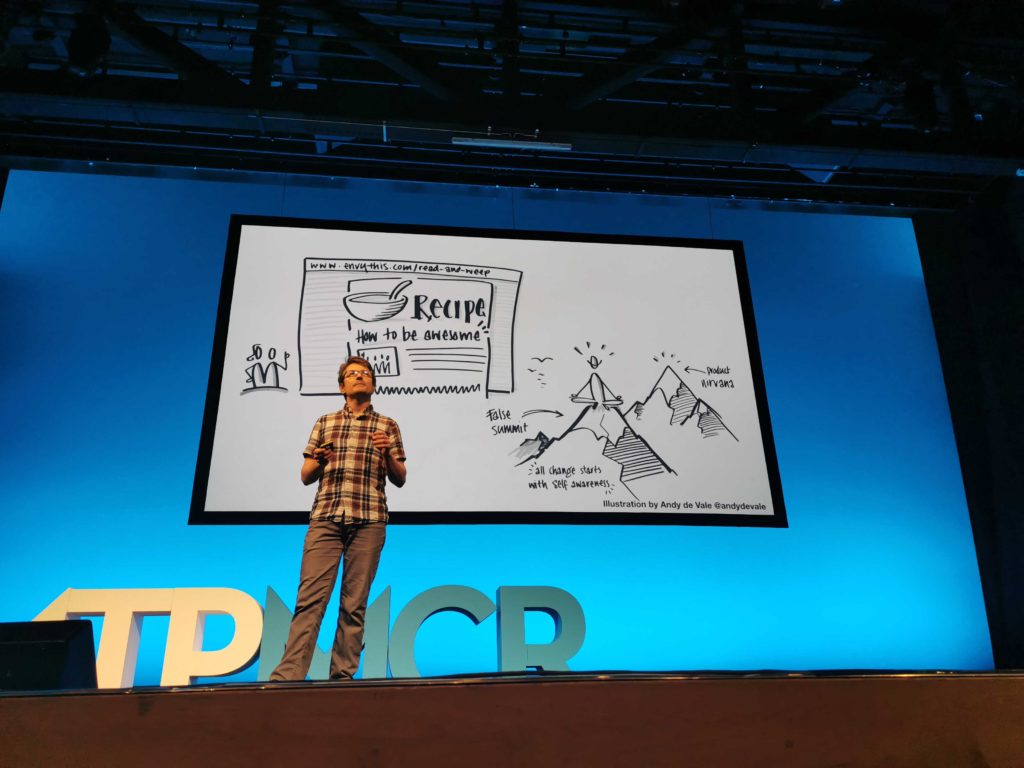
Change, for better or for worst, is difficult.
Change is not linear. It is unpredictable and erratic. Things can work one year and then stop working the next. The experiment that failed last year may all of a sudden work.
Being a product leader involves having to answer a lot of questions.
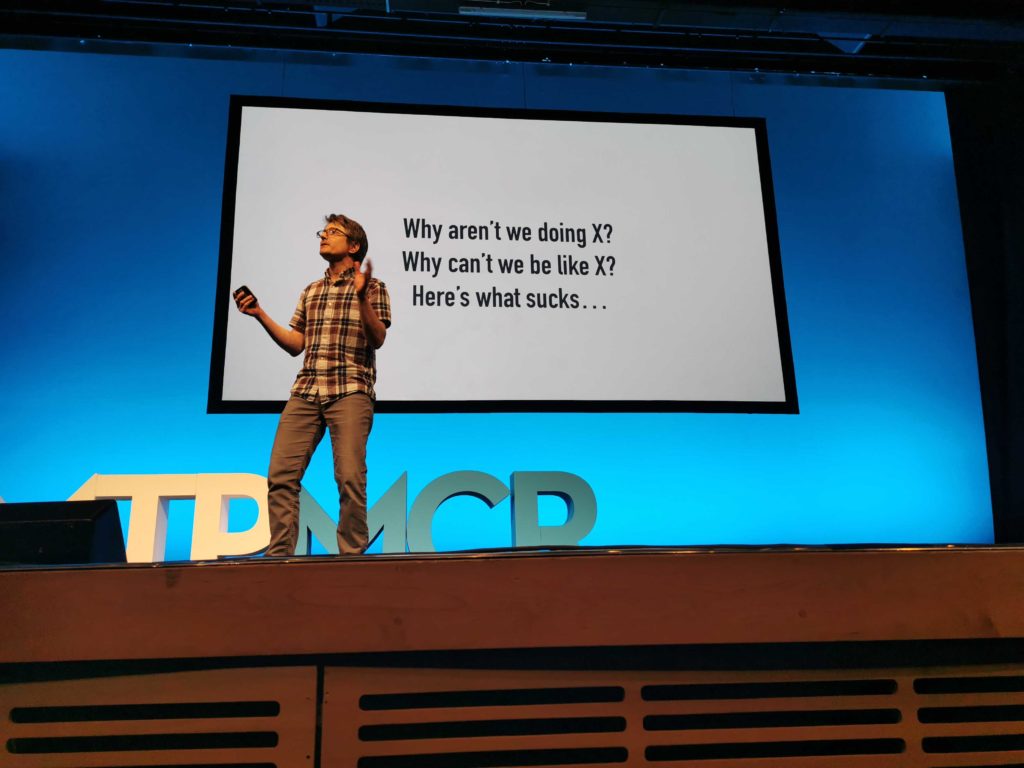
How do you face all these challenges? Remember practice makes perfect. Not just as individuals, but as a team. Product management is a team sport.
If you’re looking to adopt a new recipe or way of working, remember practice is part of it. Change doesn’t happen over night.
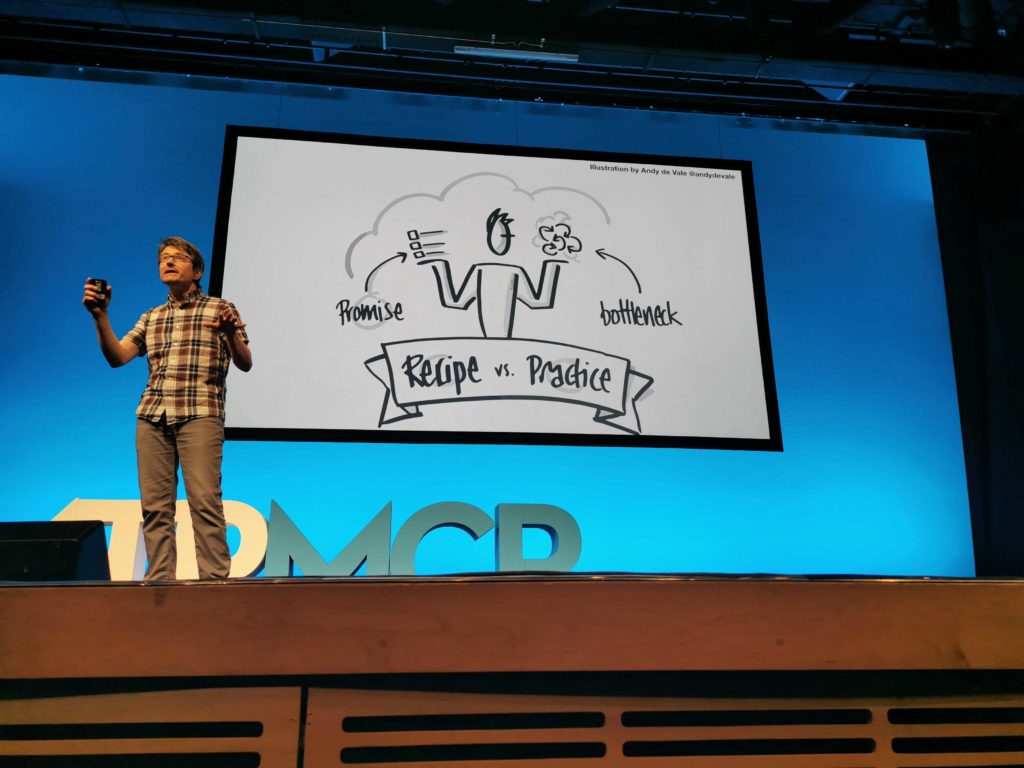
“The problem isn’t lack of actionable advice – it’s lack of practicing the actionable advice .”
John Cutler
If you’re looking to change, pick reasonable things to try. Adapt those things slowly as you go. You need safety, patience, and humility for change. Experience matters when you know how often you are wrong.
“You can only have so much change in progress at a time”.
John Cutler
Wonderful advice about intentionally experimenting with your ways of working.
John now offering us something to try first thing Monday!
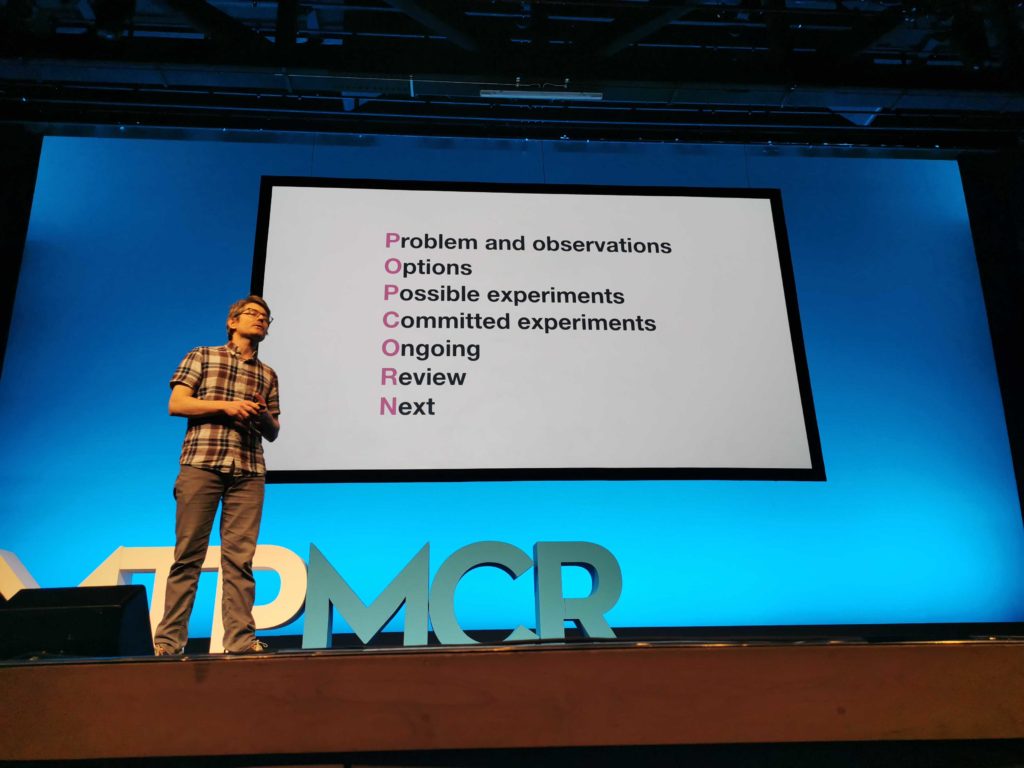
With this method, you’re essentially treating your team as a product. Which is what we do at ProdPad!
If you’re looking to improve your own practices, always lead with the why… not the way.
Rakhi Rajani
Sitting in on Rakhi Rajani’s talk on creating cognitively diverse teams.
As a quick brief:
The conversation around diversity has traditionally focused on gender and race, however the best teams I’ve ever worked in are diverse in many other ways. In this session, I’ll share lessons learnt from creating innovative product teams that excel at finding forward thinking solutions – by leaving their disciplinary baggage at the door.
Rakhi Rajani
Today Rakhi will talk about:
- The types of problems we will tackle tomorrow
- The mindsets we need to tackle them
- The leadership styles needed
Inventing means sitting at the intersections and being comfortable with uncertainty.
How people think is important. As a result of new technologies, people have changed. Kids are less able to process long form content and are more comfortable digesting short pieces of information. Competing for attention when building products comes into play.
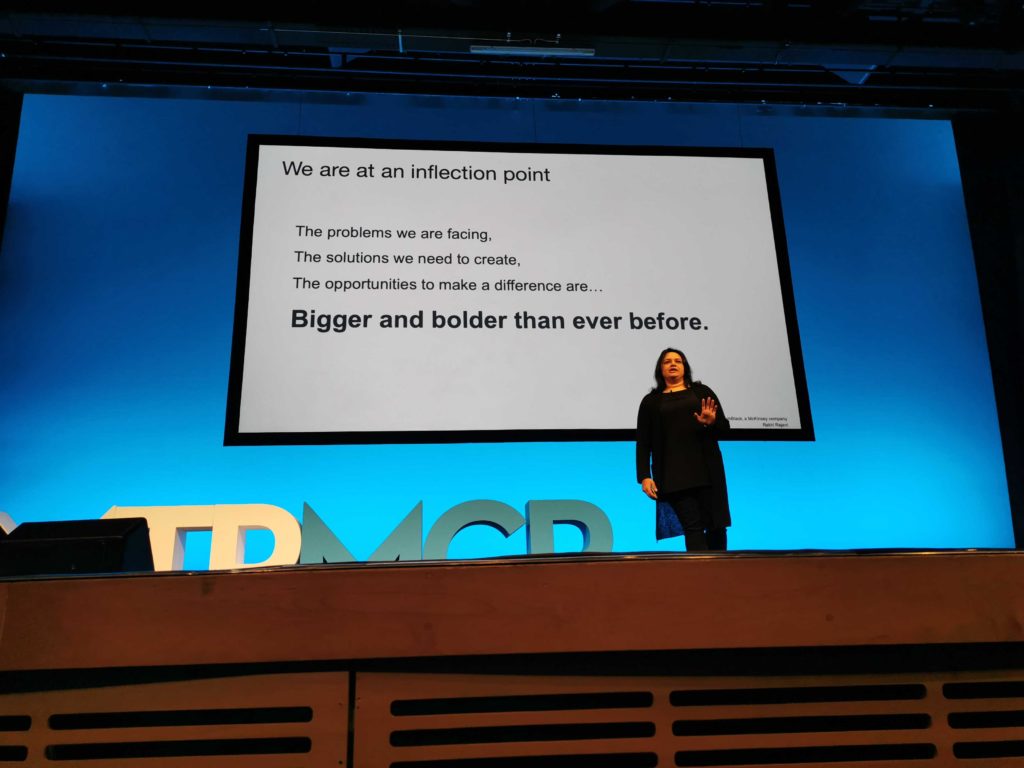
Humans naturally transfer what they know to other contexts. The situations we have created need a diversity of mindset to shift what and how we do things next.
What problems can we solve? How do we bring different people together to solve these problems? What data will help us create a new future and how do we ensure it is not biased?
What mindset do we need to tackle these questions… there’s three steps, Rakhi says. Tactical, strategic, and moonshot thinking. This is also known as the Now, Next, Later thinking stream. Hm, this looks familiar!
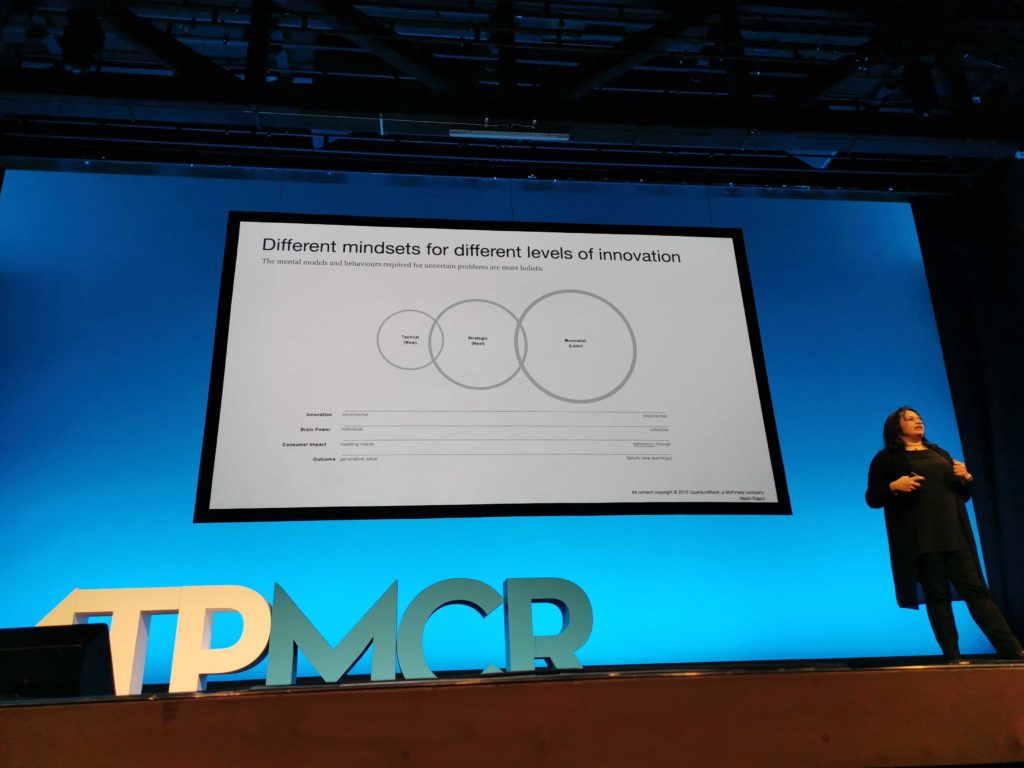
So… the big question. What is cognitive diversity?
First… it is invisible. It’s mental processing that happens in all of our brains based on our own backgrounds, says Rakhi. We all receive the same input, but the way we process that information will differ based on how we were raised and how we think, resulting potentially in a very different output.
The danger lies in gravitating towards people that think the same as us. This happens in an attempt to avoid conflict and uncomfortable situations.
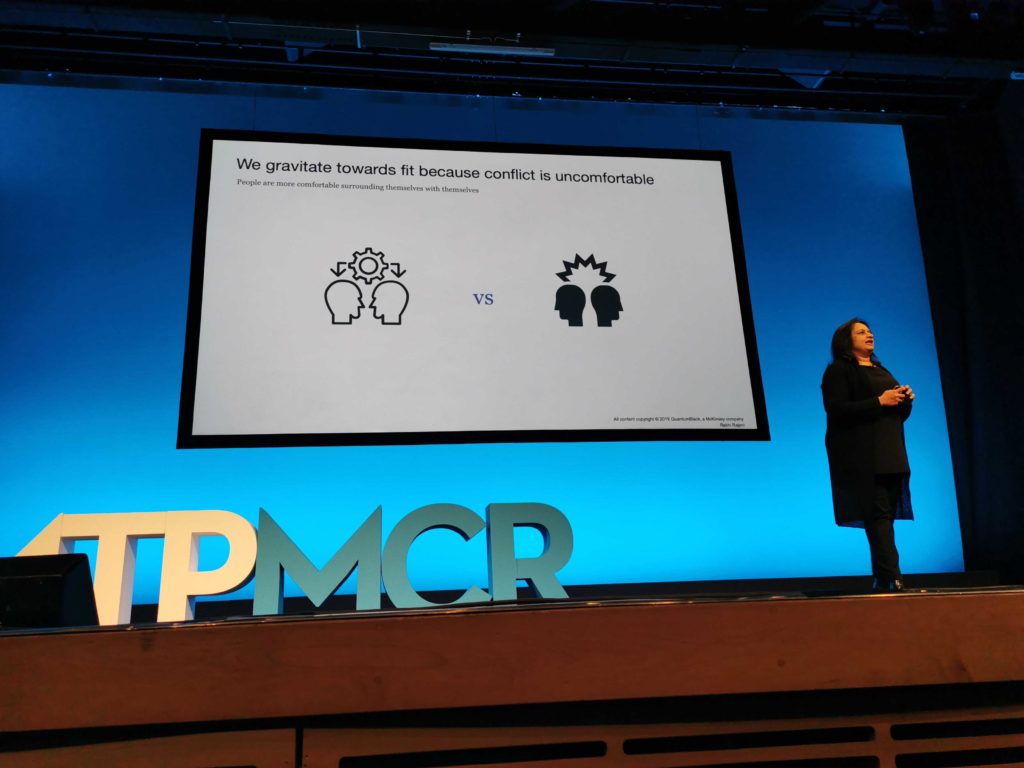
This sometimes leads into hiring for “cultural fit.” However, cultural “fit” doesn’t help you save the problems.
The blockers to diverse problem solving lie in two key areas:
- Disciplinary boundaries: Imposing constraints on people based on what we know what they can do vs what they can actually do (this is where constrictive job description can be dangerous!)
- Disciplinary hierarchy – “I am better because I am more senior.”
The perspectives different people bring can lead to more innovative ways of fixing a problem. Truly collaborative problem solving is shared but is not rooted in consensus.
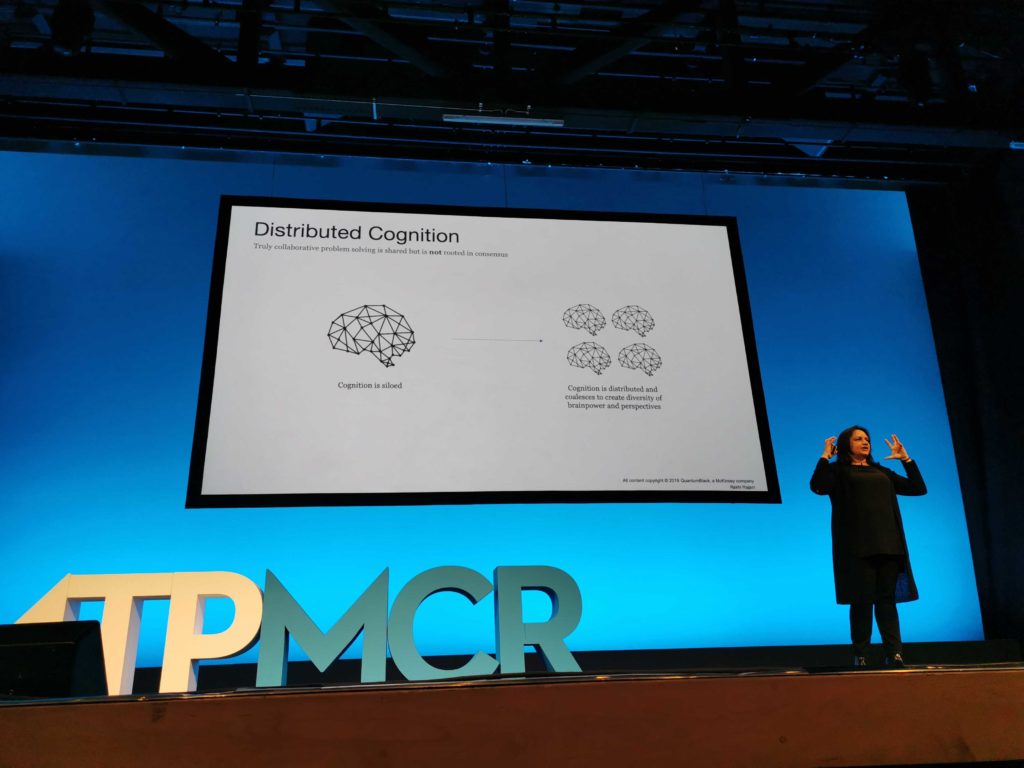
In thinking about building teams, don’t focus on what CV’s and interviews alone tell you. Throw a curveball! Rakhi likes asking a single question – “what did their teachers say about them on parent-teacher conferences?”
Be deliberate and opportunistic in the mindsets that you need. If you really want to be successful, don’t look for someone that has the ‘ability’ to do the work, but people that think outside the box, and push people to think outside it too!
Adrian Howard
Now at Adrian Howard’s OKR talk!
Today Adrian is tackling how to write OKRs that don’t suck.
I am unfortunately sitting at the back of the room, it’s packed! Taking pictures will be a challenge but I will make this happen for you guys.
How do OKRs come about? From some awesome, random quote someone heard somewhere, says Adrian.
They read a blog post, then do a little Googling, and attempt to implement them… incorrectly. I know I’ve been there!
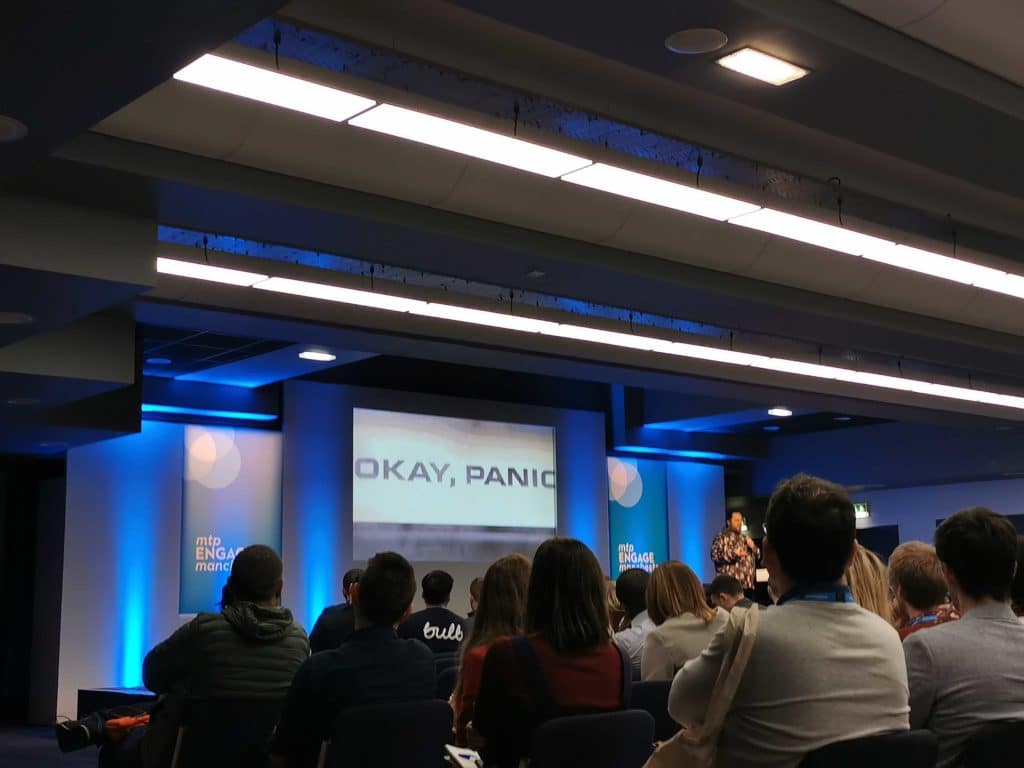
Panic first ensues as we try to set our OKRs and then… nothing happens for a while.
So how do we get around this?
OKRs are not magic
OKRs do not magically make things better, and they don’t give your product a vision when it doesn’t have one. It does not magically give you a strategy, either. These are some common red flags to watch out for.
Stop OKR’ing all the things
Your NPS score is not an OKR. As a matter of fact, not all of your metrics are OKRs. Generic metrics do not give you a direction.
Focus on why
Always start by focusing on why. Why do you want to grow? Why do you want more money? What is the thing that you are trying to do… and why?
OKRs are for active steering
Unless you can actively change something, OKRs are useless. Staying the same and not moving the needle is not giving your OKRs any value. OKRs must have a strategic intent.
Just because there is something that you want to happen, it doesn’t mean you should make it happen. A Jurassic Park quote comes to mind. You need to understand why… why do you want that thing to happen? Then go from there.
Most importantly… make sure your objectives aren’t quantitative. That is what key results are for.
Output based OKRs are a red flag
Your OKRs should not be based on the milestones you ship. The amount of features you ship do not measure the impact of the objectives you’ve set.
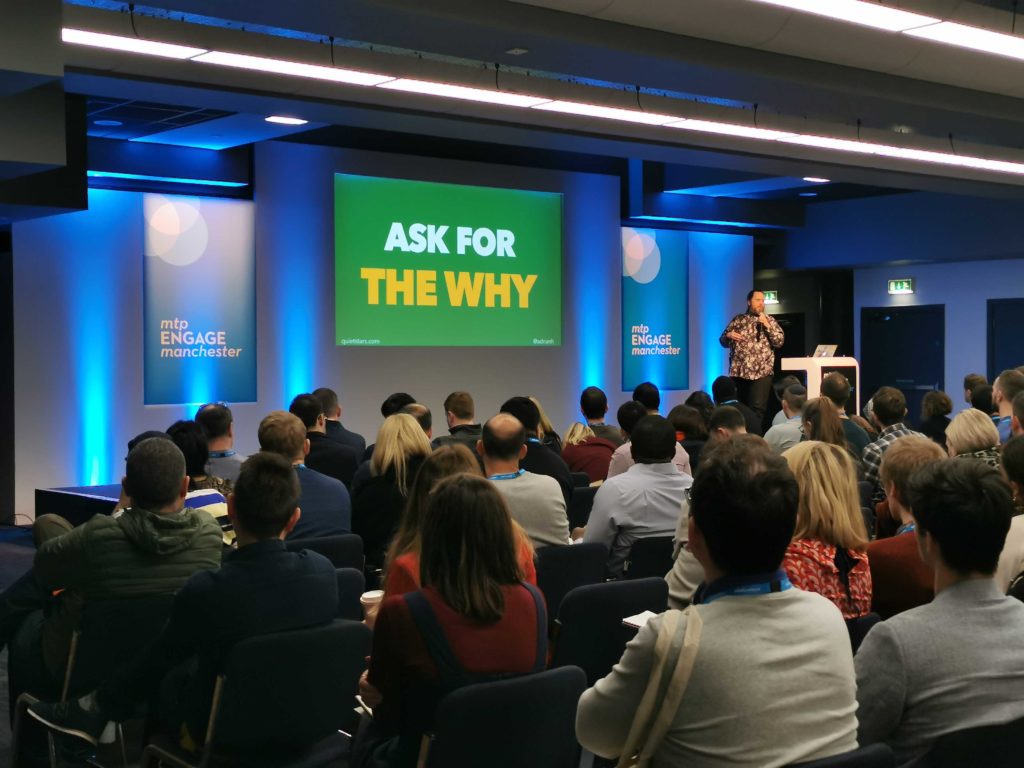
Top Down OKRs are another red flag
If your boss is telling you what to do, you’re doing things wrong. Your teams should have autonomy to set these things on their own, supporting the North Star objective. The people that are doing the work should be involved always. We’re looking for alignment, not a cascade!
OKRs don’t change every quarter
Unless you’re a startup and you’re pivoting away every few weeks, says Adrian, your OKRs should not change continuously. Your vision does not change that often.
Retrospect, iterate, and learn
Always look back and understand what you’ve done, what you’ve learned, and why things are changing if they are. Are you measuring the right things?
And as always… the resonating statement the entire day has been… ask yourself why!
Goodhart’s Law
When a measurement becomes the target, it ceases to be a good measurement.
Look to pair key results. If you do one thing, is it affecting another? If you’re reducing churn, is it affecting more sign ups?
Run Pre/Post-Mortems
Understand not just if you’re meeting your key results, but what the effects and impact of those key results are. Pre-mortems help you understand what to measure, post-portems help you understand if you’ve measured the right things.
If you’ve grown your subscriber base – who is actually signing up? Is this still your target audience? Did you accidentally target an entirely different audience?
And again we loop back to… why?
OKRs are for strategy deployment
OKRs need to be relatable, understandable, and leads the organization to things they want to be doing. If it doesn’t, then you have the wrong objectives!
Recommended reading:
- Christina Wodtke, Radical Focus
- Spot the difference: Company vs Product Objectives
- Putting it all together: Building an objective lean roadmap
Lucy Spence
Great introduction to Lucy’s talk… she’s spent 2 decades making mistakes. But as we know, this is a good thing!
Lucy’s talk today is about decision supervision… and we hear there may be great doc pictures here. I’m already hooked.
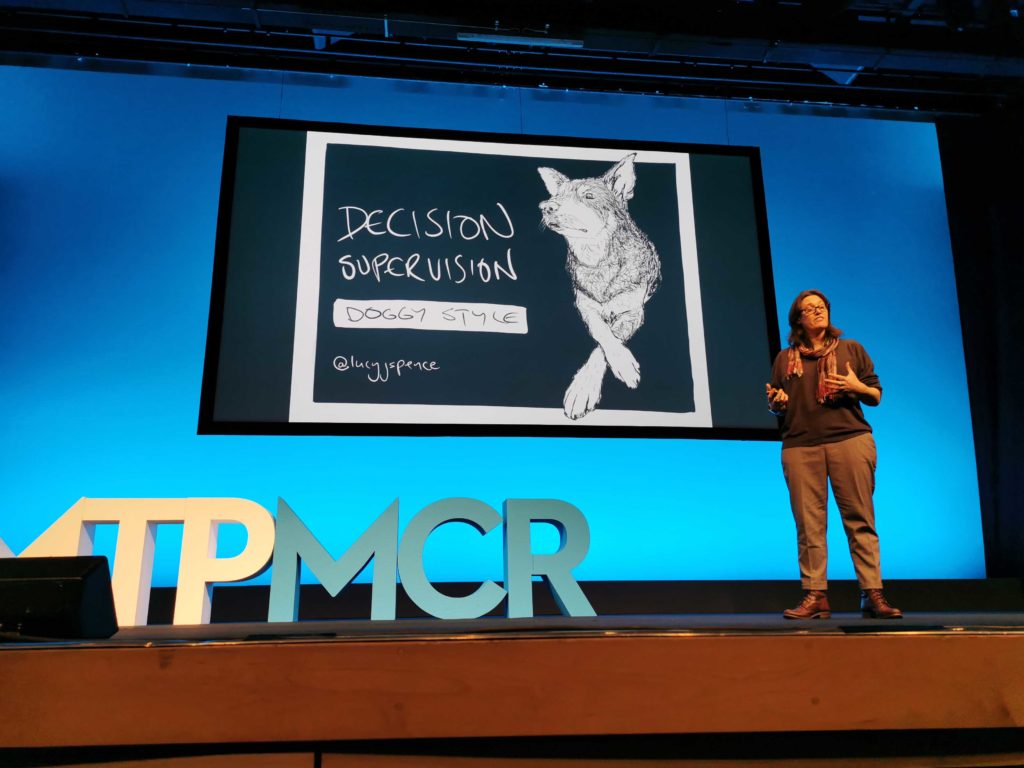
Concept 1: Match Effort to Impact
Identify irreversible decisions. Much like bringing in a dog to your family, you need to think through the problems you’re faced with. Don’t get tangled up with the little things when you might be missing the big, scary beast. These are the biggest impact, painful to even contemplate unwinding. Put your best effort into these!
Now this doesn’t mean you shouldn’t do the small stuff. But lift yourself out of that small stuff to-do list and focus on the bigger picture.
Optimize speed vs accuracy. Creating short feedback loops that generate actionable insights enable you to learn much more by doing than theorizing.
Concept 2: Be Tri-Directional
Signal where you’re going, keep an eye over your shoulder, AND fold in that customer feedback. It shouldn’t look like Linda Blair from the exorcist. Recalibration shouldn’t be a monster!
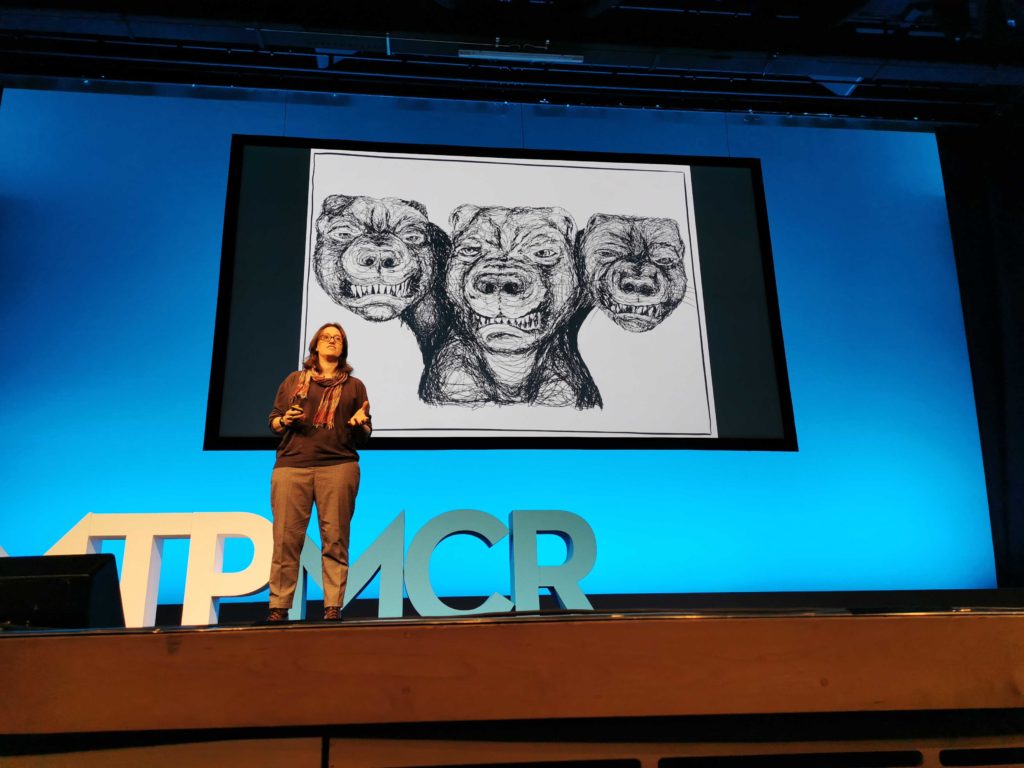
Start at the end and explain what you’re trying to do – but explain the experience (good and bad.) Describe the opportunity and then the experience – this leads to higher quality conversations about desirability.
While we’re on the topic of conversations… narratives are a good thing, says Lucy. It’s not about bullet points. Telling stories is a good thing!
Most of us have built the wrong thing at one point or another… and narratives is one of the best ways to counteract that!
“Narratives are an excellent way to hedge against horrible looking things built for the wrong reasons!”
Lucy Spence
There’s always unintended consequences when we build things, too. (If you missed it, C.Todd Lombardo and I talked about unintended consequences on this webinar!) We’ve just gotten a bit of a side story about puppies eating poo – it’s a thing if you’re a dog owner. But the moral is the story is about influencing behavior and using insight to your advantage. 💩
We see unexpected behaviour as a result of the products we build. How can you capture that, and use the insight to your advantage?
Lucy Spence
Concept 3: Expose the invisible
Compare and contrast your options.
Check whether or not you’re solving the right problem instead of focusing on whether or not you have the right solution. Wise words!
Keep in mind you may be applying cognitive bias when making decisions. It’s ok for you to also look at things you aren’t comfortable with just yet – this is where continuous discovery comes into play!
Watch out for decisions made in isolation, those things you didn’t consider may have terrible consequences after.
Great reference to Teresa Torres’ Opportunity Solution Tree to assist with decision making and experimentation.
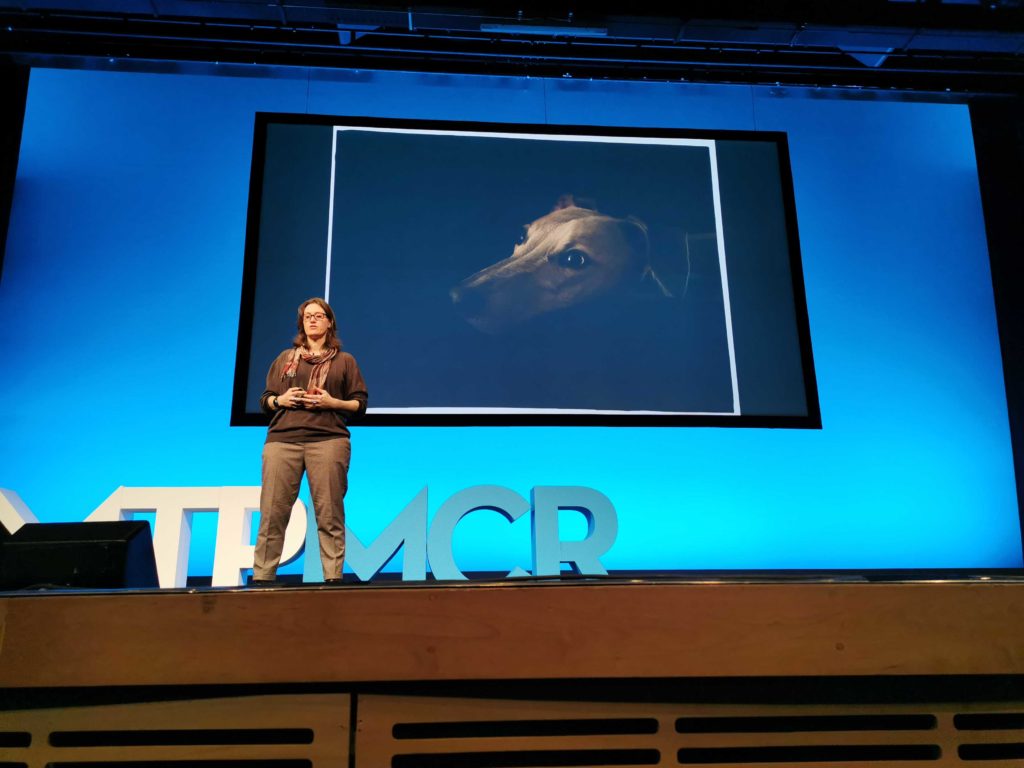
Stewart Livingstone
Stewart will talk about hiring for talent.
There’s a known skills shortage right now. Even more so, there’s a huge disparity between gender diversity.
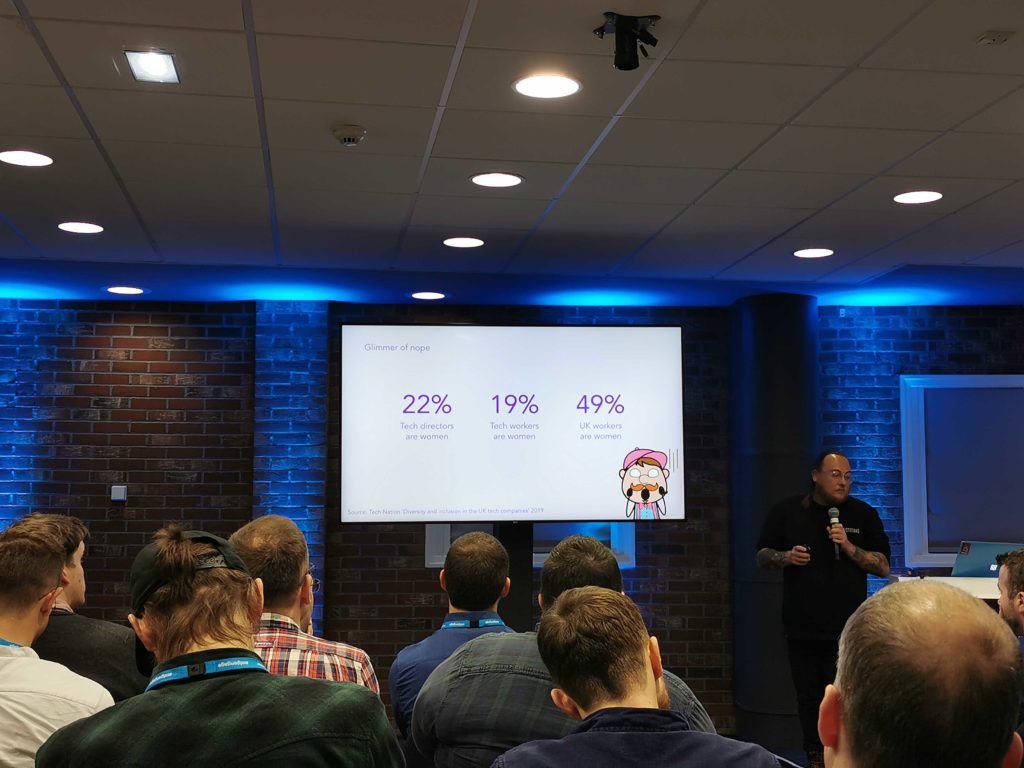
We’re doing ok, but we can do so much better!
When rhetoric becomes reality, are we running away scared? We just got a great story about dragons and facing ideas. Do we just love the idea of something, or are we willing to follow through?
When there is a talent shortage… how important is experience at the end of the day? Valuing experience over attitude can be disastrous, says Stewart. People are always looking for new opportunities and growth, and if you don’t provide that internally, people will look elsewhere.
Higher for attitude, then teach skills!
How do we remove our dependency on relying on experience when hiring?
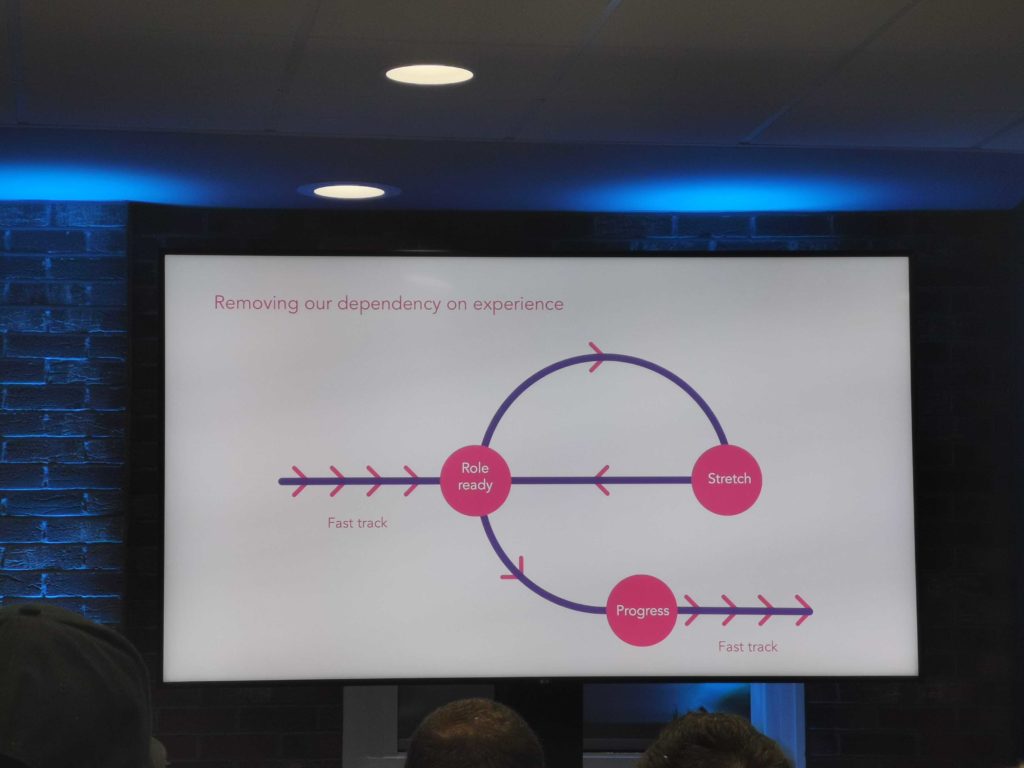
Encourage more diversity, allow people with the right behaviors and fast track them into the right roles.
Salma Alam-Naylor
Final talk of the day before the last keynotes!
In 1998 Salma made her first website. As a matter of fact, so did I. It involved Matt Damon. Ask me about this later.
Much like Salma, I also got a music degree. It’s like we’re the same person. This is all wrapping up to a great point, promise.
I have not been a comedian, but I was once told I should do stand up comedy. But this isn’t about me, so back to the talk.
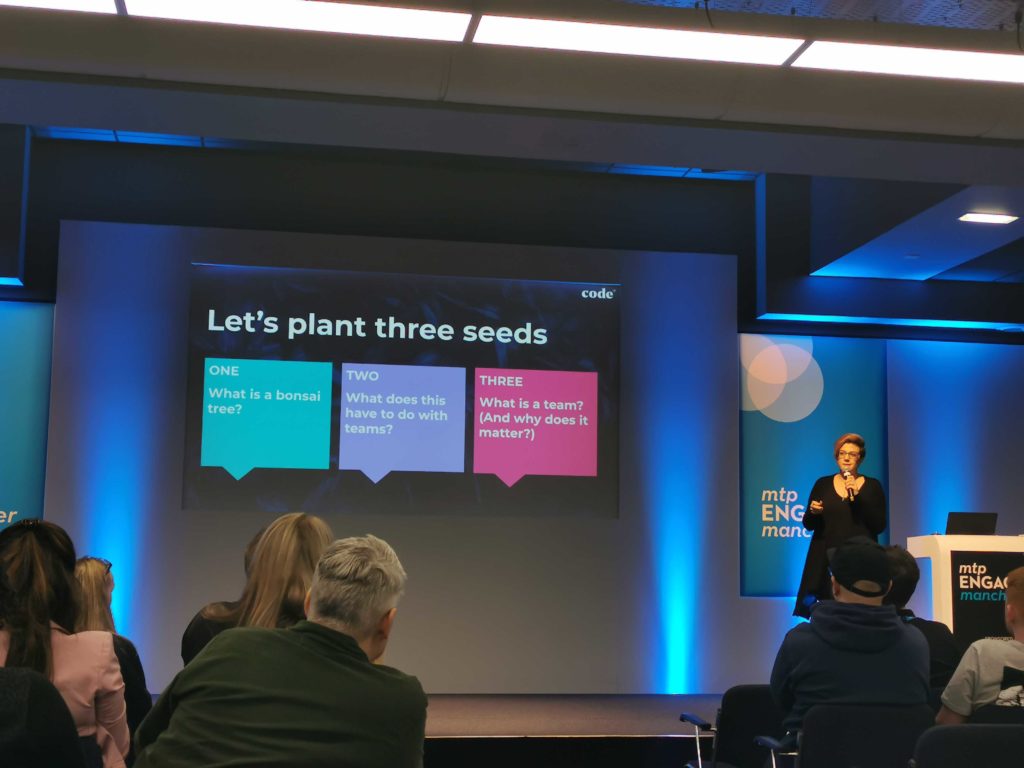
So what are bonsai trees? TLDR; they’re an oppressed plant there for your viewing.
So what does this have to do with teams?
A team is not a small tree grown in a shallow container. Teams need space, nurturing, and more than a small table.
A team does not fit inflexible aesthetic ideals. Not every team is beautiful, we need dissonance to solve problems!
A team is not to be contemplated. It must be gifted with a vision and drives actions.
A team is recognized for its collective efforts, not those of its growers. They need autonomy to grow, and it’s not about the person trying to confine the team.
So what is a team?
Well.. it’s a tomato plant. Hard evidence to follow.
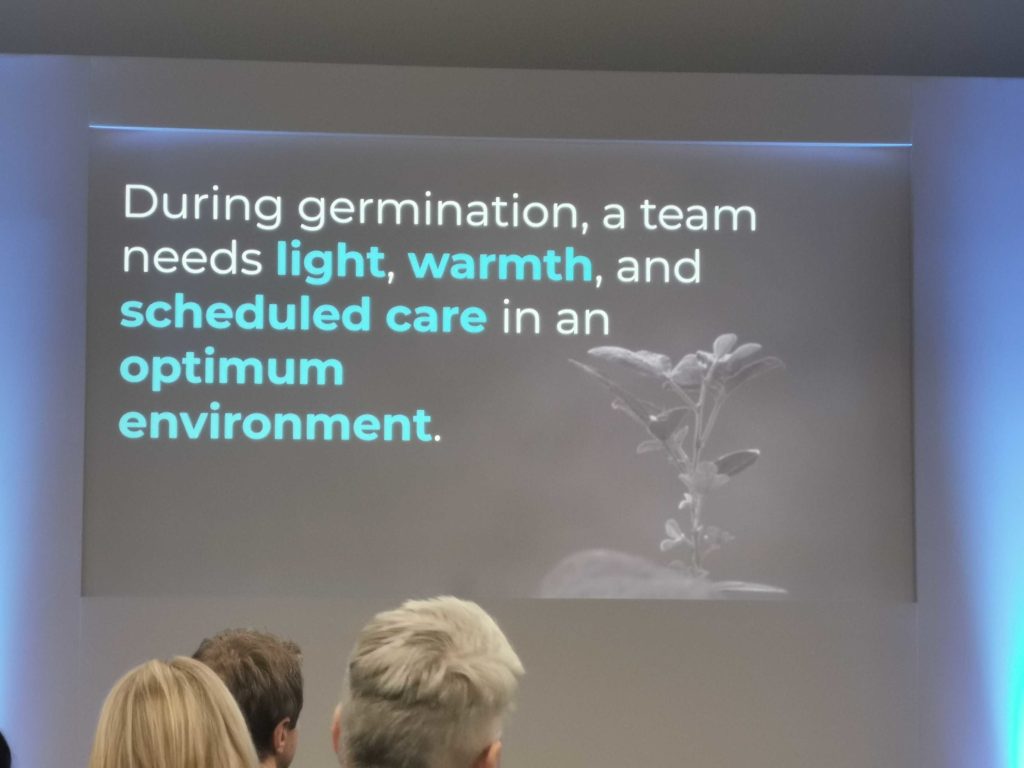
When the time is right, a team must be supported to make the transition to an open space. Check on them often, make sure they’ve got light and space to grow.
In time, the fruits of your labour will ripen and mature for others to consume and enjoy. I mean, that’s about tomatoes, but still true about teams. Disclaimer: we are not encouraging cannibalism.
The takeaway here is that no team is perfect, but that’s ok. Imperfection makes things perfect in its own ways. What is important is to learn from those imperfections!
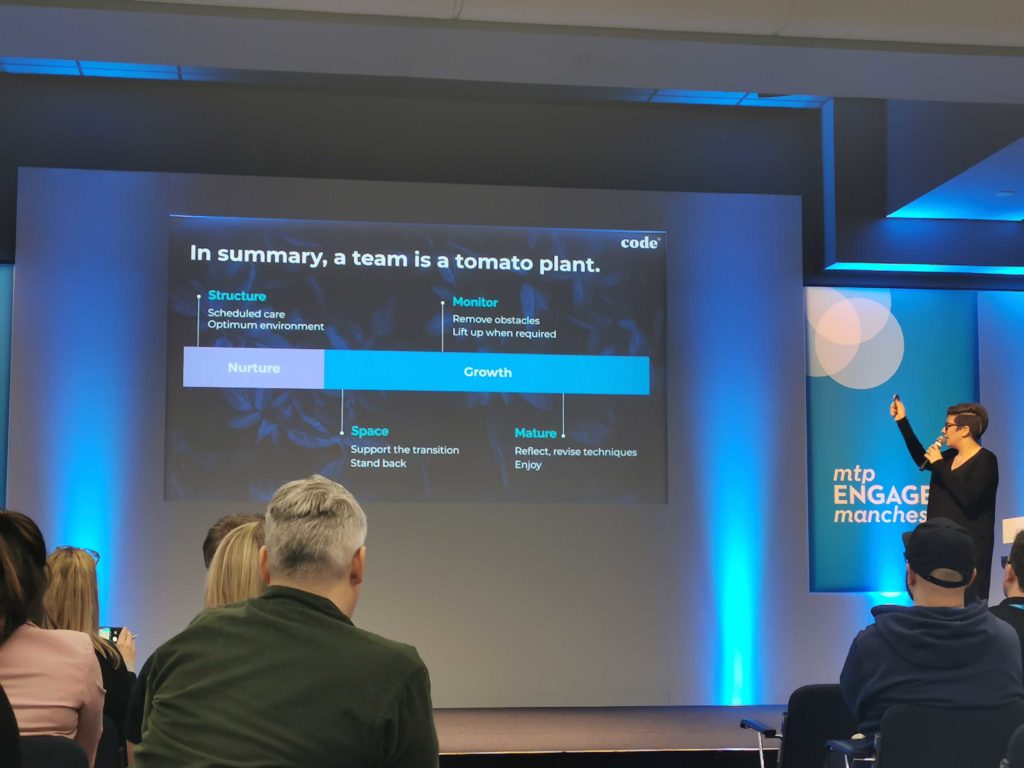
Emily Tate
Lauren Currie has lost her voice, but the amazing Emily Tate is jumping in to cover!
Emily will be talking about mastering stakeholder management today. Some days are good, some days take you by surprise – and no, this isn’t about Emily’s day – but about working with Bob. Bob is the guy who is a super advocate. He’s all about taking chances. Until he wasn’t.
Bob turned into the biggest detractor.
So what happened? Bob was behind the first version of the app, and expected everyone to validate how right he was about the things he had done.
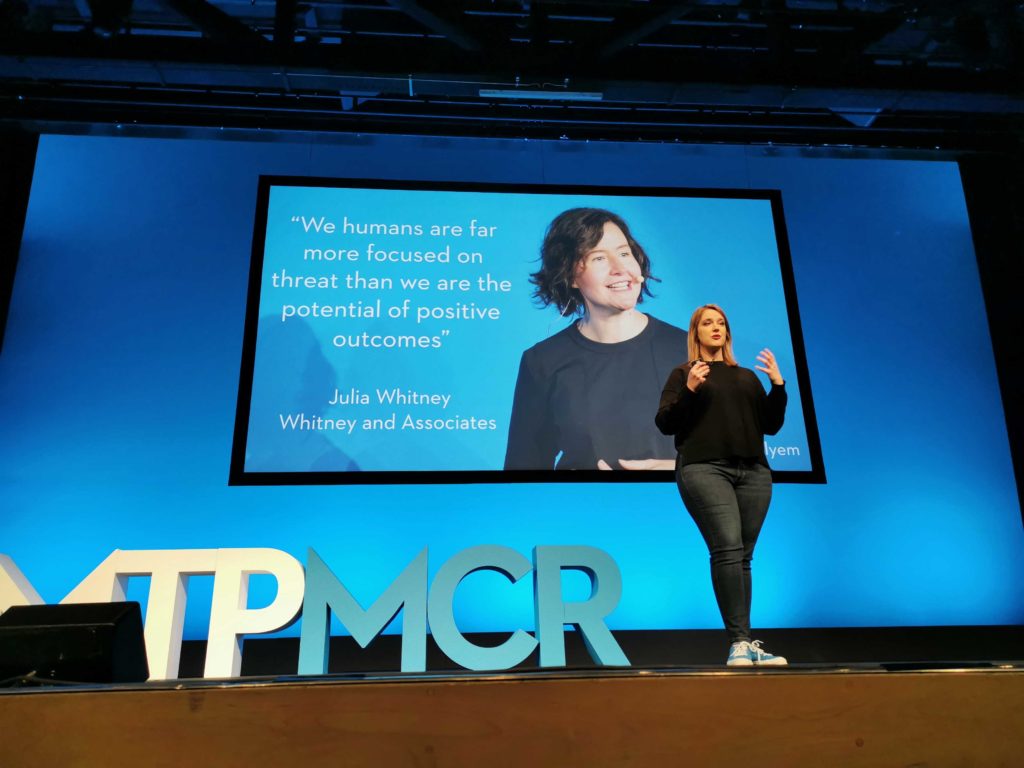
Bob clearly felt threatened, but that’s an entirely normal human reaction.
Product management = people management.
As product managers our job is to find balance and to weight different aspects that allow us to build great products.
A few tips on how to get started:
- Identify your stakeholders, but recognize they’re not all equal.
- Interview your stakeholders.
- Communicate regularly.
- Mistakes are common. Not having alignment on goals is one of the most common issues for many teams. (Remember, outcome > output!) Every team needs clear, prioritized goals.
- Lack of transparency is a problem. Don’t pretend things are ok when they are not – catch those issues early.
- Transparency builds trust. The more transparency you provide the more trust your team will have in you.
- Know which battles to pick. Most importantly, you don’t have to win every battle the first time. When needed, you can then have those hard conversations.
- Handling angry people is part of the job. It’s going to happen – we spend a lot of our time telling people “no.” If you find yourself in that situation, find a way to exit an angry situation to avoid high emotions. A good way to diffuse a situation is to ask for help in understanding why the person is upset.
Important note: Sometimes people are just jerks. Take care of you. It’s not your job to fix everyone. - Falling prey to the HiPPO happens. Fight the “swoop and poop.” Communicate early and often, make informed data decisions, and be proud to own your product!
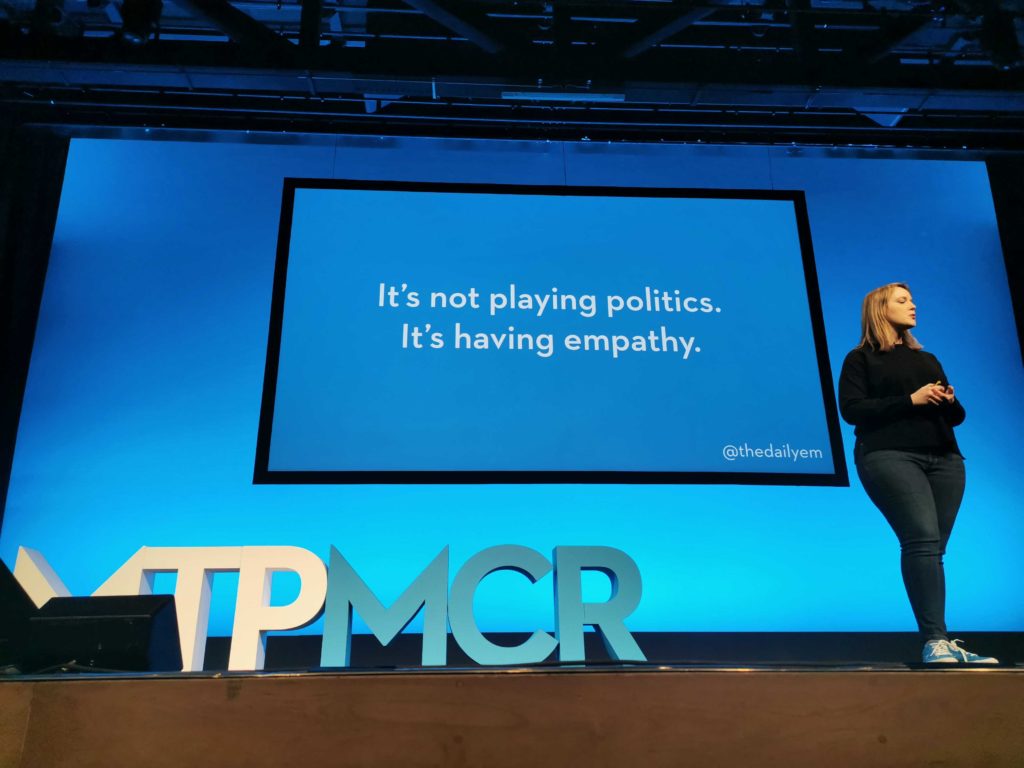
Strong stakeholder management can be the difference between a good product manager and a great one. We can’t do things on our own, we can’t build products on our own. At the end of the day, it’s about empathy, not politics!
Shaun Russell
To succeed and to grow, companies need structure.
But underneath that structure, all organizations have buried problems. Those are the problems we don’t talk about. And then there’s the product manager – the person that comes along and asks why. The person that makes the product and the company accountable for what they build. Are we building the right things for the right people?
What happens when we build for an MVP. The MVP is about the guided principle of conflict. Instead of just plowing ahead with a feature, you take the time to test it first.
“A great product manager is someone who can throw a well-measured tantrum about the right things” – just enough to get the right answers, to hold the product to account with reality. It’s uncomfortable, but right. Conflict can lead to magic!”
Shaun Russell
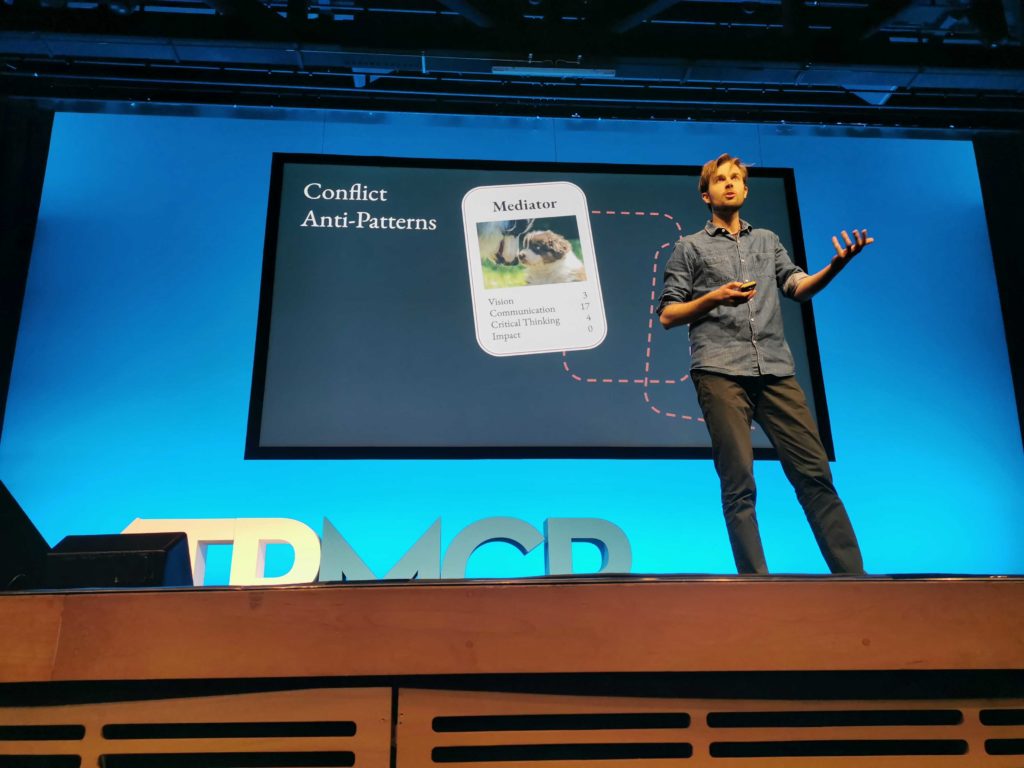
While being a mediator sounds like a good idea, compromise is actually a terrible outcome. Compromise as a goal is a mistake, and should be used only as a resort. You’re taking the path of least resistance, versus finding the best solution.
As an intellectual, it’s important to note that when gathering evidence to validate a problem, you need to stand up for the evidence you collect. Shout it from the rooftops, while bringing stakeholders together to understand shared goals. It’s not about proving you’re the smartest person in the room, but about teamwork.
“But I’m the product manager!” That’s certainly not the right attitude to have, says Shaun. This is the attitude of a “deviant” product manager. It doesn’t matter how good your designs are, if you don’t have time for usability testing, things will flop.
All of these situations avoid problems at the root. We need to stop being these product managers! A good place to start is surfacing conflict.
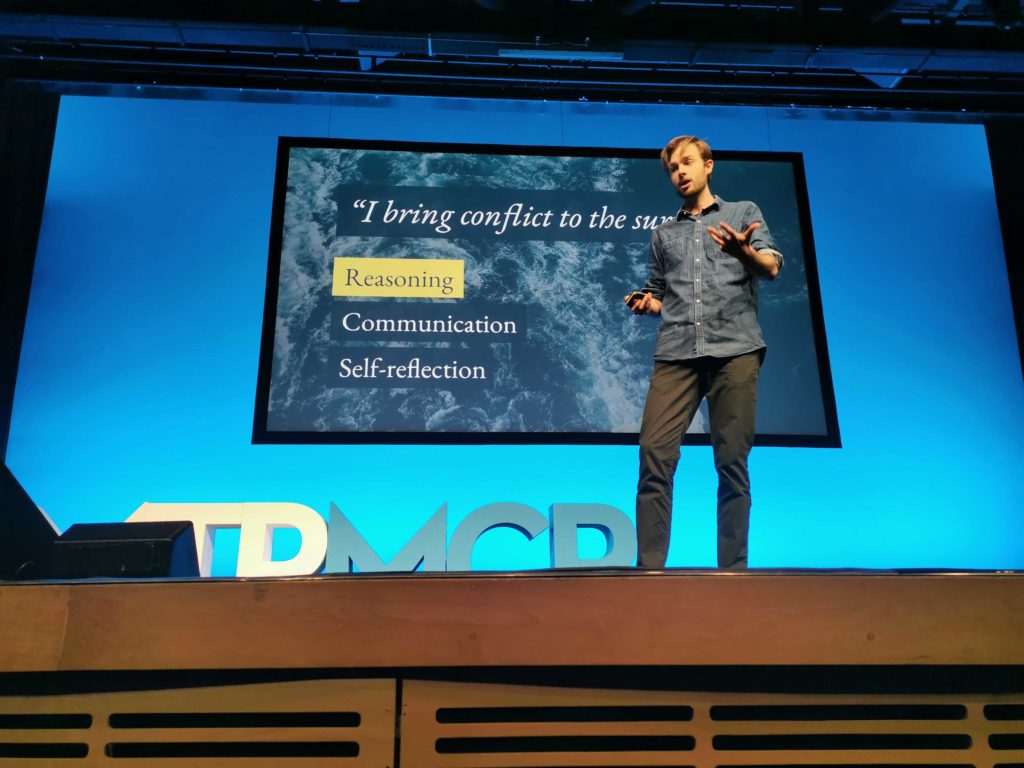
As human beings, we look for patterns in the way we deal with things. We look for the things that are safe and the things that are not. As product managers, we need to learn to divide the problems that we face.
How you divide the world is how you see the world.
How do we start understanding these issues and solving them accordingly?
Second shout of the day to Teresa Torres’ Opportunity Solution Tree! Another way to manage things is the KPI tree.
The second way to tackle conflict is with good communication. It’s not just about the words you use, but how you use them.
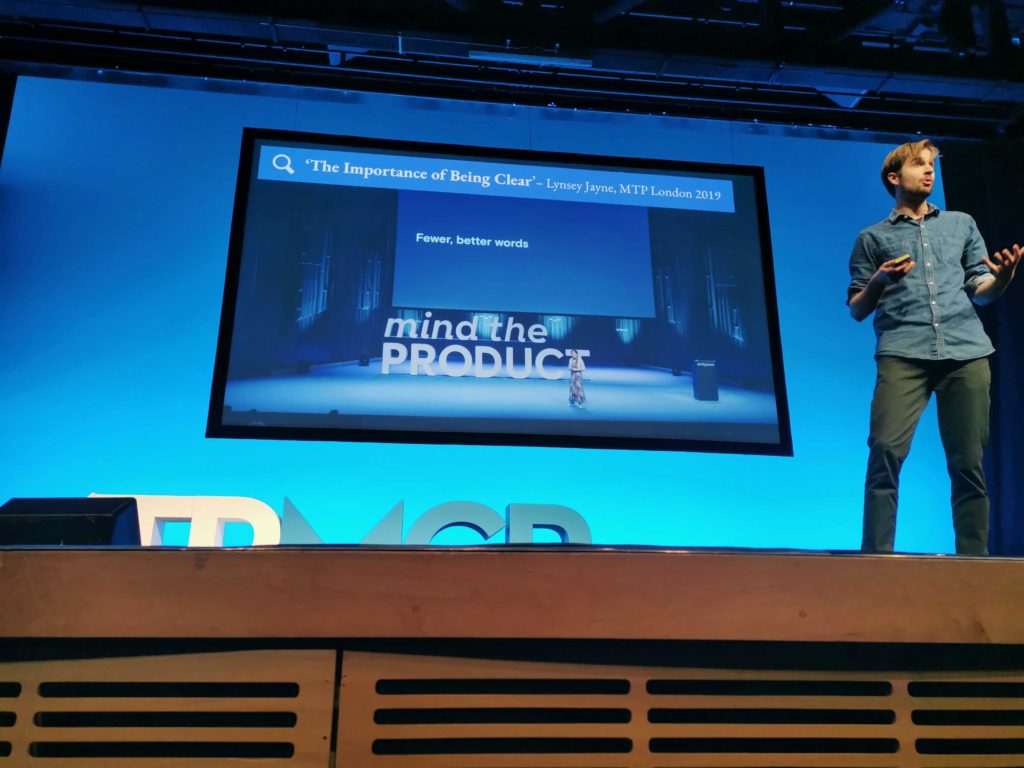
But if how we divide the world is how we see the world, ask yourself, how do you see your stakeholders? Shaun says we should see beyond the words “stakeholder management” and understand these are real people we deal with. The word “management” implies distance, where there shouldn’t be any.
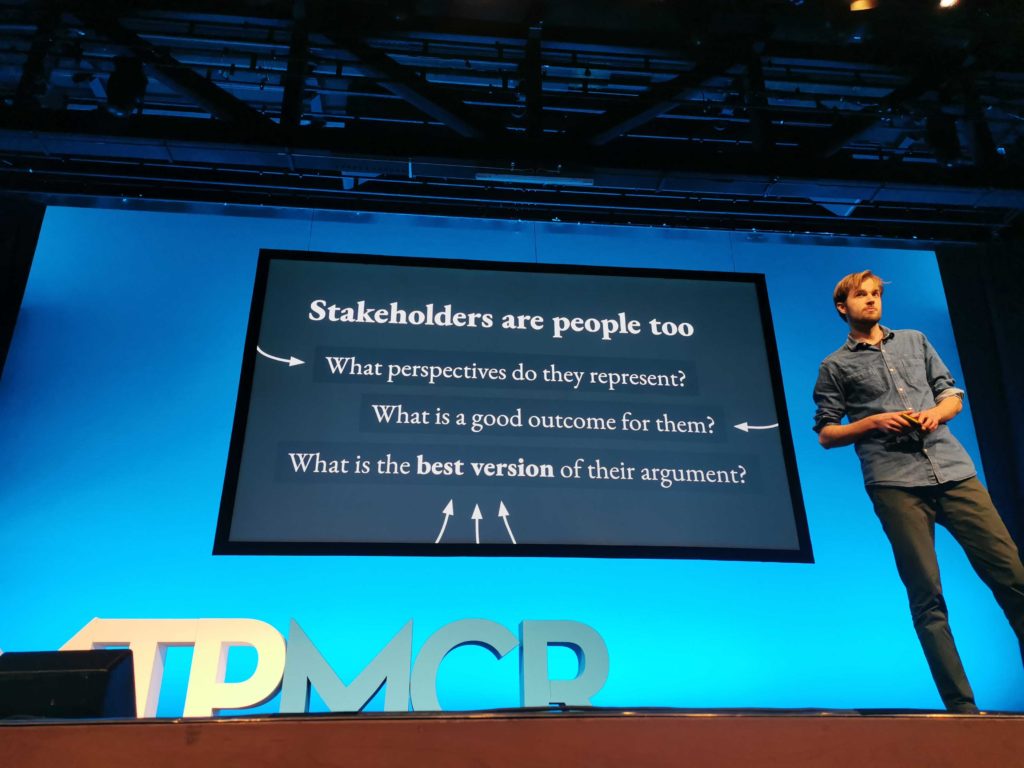
Today’s final point is about self-reflection. Product management is a role full of facing conflicts and interpersonal relationships.
Psychological safety is a real thing. You need to look after yourself and your team. If you don’t address issues in your unconscious, they will permeate into your company’s culture. As product managers, whatever we have in our mental well-being will reflect in the teams and products we build.
As a great resource, Shaun has shared something for all of us here: shaunrussell.me/writing/conflict-matrix
While it is innately human to avoid conflict, as product managers we have to remember… conflict is where the magic is.
Melissa Perri
Last keynote of the day is Melissa Perri, talking to us about a career in product leadership.
Writing a book is like working in a waterfall environment, Melissa says. If you haven’t read her book, get it now!
A lot of product managers are ready to apply all the great things they learn… but sometimes their own leadership is against these things. So how do you apply what you learn?
There’s currently 11,056 openings for Head of Product in the EU alone! That’s more people than in this room. A whole lot more.
What skills do you need to be a great product leader?
It all starts on day 1. In order to be a great CPO you have to starts with being a good PM.
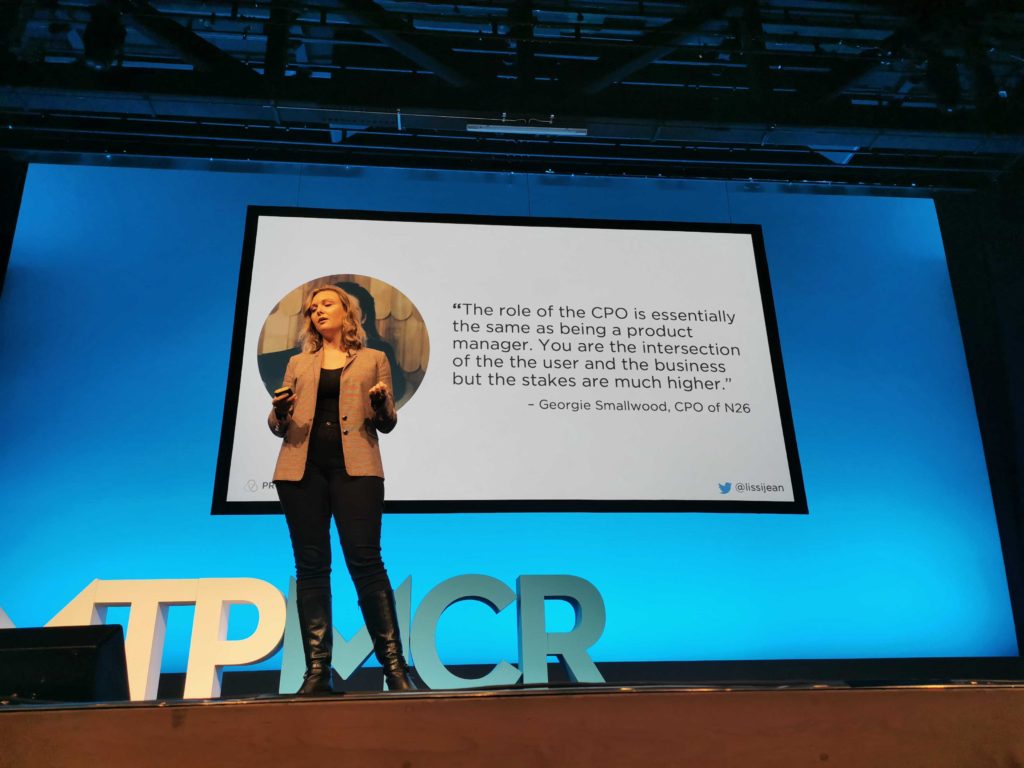
You might start out being really tactical, but as you progress into a more senior role, you move more into operational and strategic processes.
VP’s often fail because they get too down into the tactical day to day stuff. From day 1 you will be looking at strategy – a skill you will grow over time.
And so, says Melissa Perri, this is why she hates the SAFE methodology.
It separates the product owner from the product manager. If all you are is tactical, you lose your career path and miss out on learning how to be strategic.
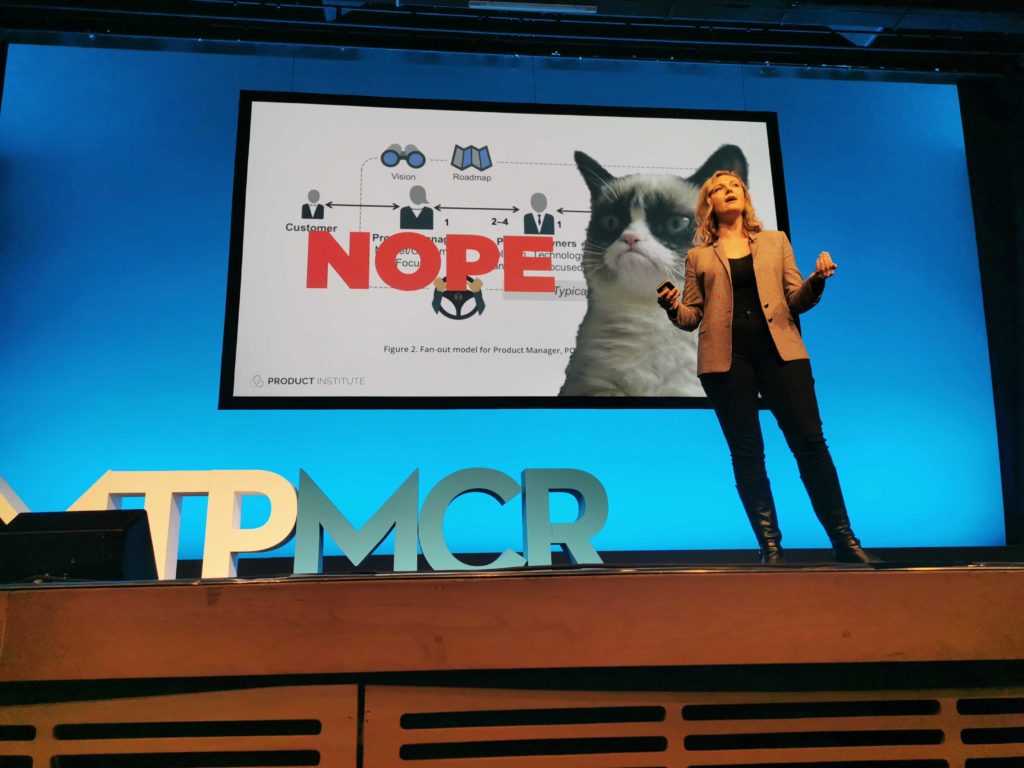
In order to grow towards the C-Suite, you will be looking at:
- Portfolio and product strategy
Product strategy is a framework that enables teams to make product decisions about how to provide customer value which in turns drives business value.
Once you choose your strategy, you have to deploy it. This enables the team to figure out how to actually get there. It all starts with the vision (and no, that doesn’t mean you will be the “best” – ask yourself how you will be the best!)
When driving alignment, you should be able to see all the things your team is working on and drive it back to your objectives and vision. - Product operations
How do you make sure everything stays on track? This is where product ops comes into play.
We talk about outcomes, but it’s also important to talk about what you’re measuring as part of those outcomes! It’s all about how you look at data and use it to your advantage. - Good communication
Communication is the make or break thing about making it into the C-Suite. You have to be able to tell your story, but also be able to relate your story to the bigger picture.
Tell the narrative about how building something will help you move forward. Most importantly, learn to empathize with your team. Don’t just have an attitude about how others “don’t get it” – but consider how others are getting judged for success.
When you’re building trust with people, consider their goals. Put things in the context of how it helps your team member. Doing this will get those team members to be on your side and gain momentum. Throwback to Emily’s talk, build trust, don’t focus on winning the battle!
What do companies look for and how do you position yourself? What do companies look for in product leaders?
It’s important to understand there isn’t a single type of product leader. There’s the Enterprise CPO, the Startup VP, and the Scale-up CPO. It depends on your company’s context! It depends where you are in order to find the right fit for your growth strategy.
There are some really great slides that explain each type of CPO (with appropriate bear cartoons) – be sure to get your hands on Melissa’s presentation later!
When looking for a product leader, it also depends on the domain. Software vs non software require very different skills. A product leader score card can help with this.
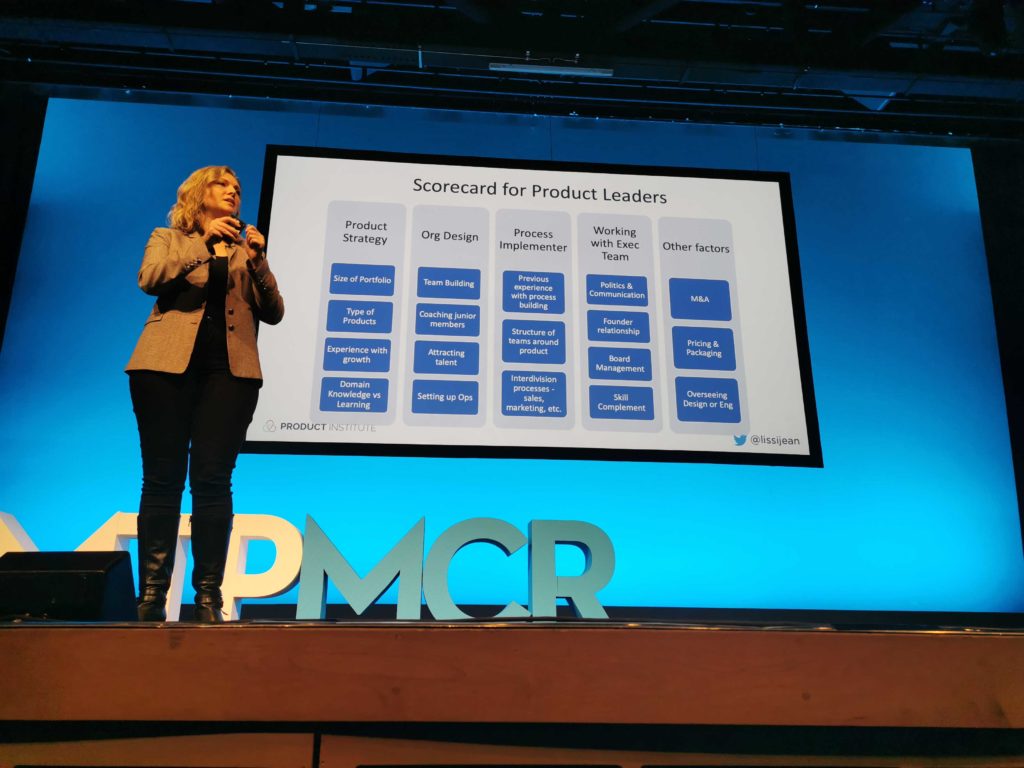
The take away… what type of product leader do you want to be? Most importantly, know that your career is not a straight line. It’s ok for you to decide where you fit based on your skillset right now, and how you go about growing that skillset.
Sign up to our monthly newsletter, The Outcome.
You’ll get all our exclusive tips, tricks and handy resources sent straight to your inbox.
